There’s a desolate dirt track in southwestern Bolivia’s altiplano (high plains) called the Lagunas Route. It stretches for over 400 km (250 mi) through a treeless, uninhabited wilderness occupied by colourful lakes, thermal springs, canyonlands, and volcanic formations. The Lagunas Route is the kind of dirt road that 4×4 vehicles were made for – you know, the kind you see in the truck commercials. Once you’ve filled up at the last gas station you’re in for at least three days of self-sustained off-roading. So what do you if you’re in a 2WD van on a 4WD route? You follow a Toyota truck.
Meet our Bolivian Backcountry Caravan:
Our caravan had three 2WD vans: Ben and Lorenzo (from New Mexico) were in a VW Westfalia named “Wally”, Tanya and Philipp (from Ontario) were in a Mitsubishi camper named “Gulliver”, and we were in Lucky. Our Californian friends, John and Paula, led our caravan in a beastly 4WD Toyota Tundra camper named “LoJo”. They affectionately called us van-dwellers “The Ducklings”. A fitting name, really.
John and Paula carried two walkie-talkies with them, so they gave us one and we brought up the rear of the caravan. The Mitsubishi was the smallest of all of us (Gregor and I nicknamed it the “Itsy Bitsy”) and it also had the lowest clearance so we kept a watchful eye in case it got stuck. Remarkably, that Itsy Bitsy went through all sorts of terrain that we thought would be impassable in a little van like that.
On our first day, we drove the gravel track through the altiplano and camped among huge boulders to give us protection from the wind. After a full driving day, it was great to get outside and climb on the rocks.
When the sun went down, however, it got really cold. It was South American winter (July) and we were at 4000 m altitude (for reference, the peak elevation of the Matterhorn in the Swiss Alps is 4400 m). Temperatures were almost at freezing at night, so we didn’t do a lot of socializing outdoors. Instead, we hid in our respective vehicles and turned on our propane furnaces.
On day two, we headed for Laguna Colorada, a brackish lake where Andean flamingoes are known to feed. The lake is normally a deep red colour, but when we got there it was only slightly pink. We didn’t see any flamingoes either.

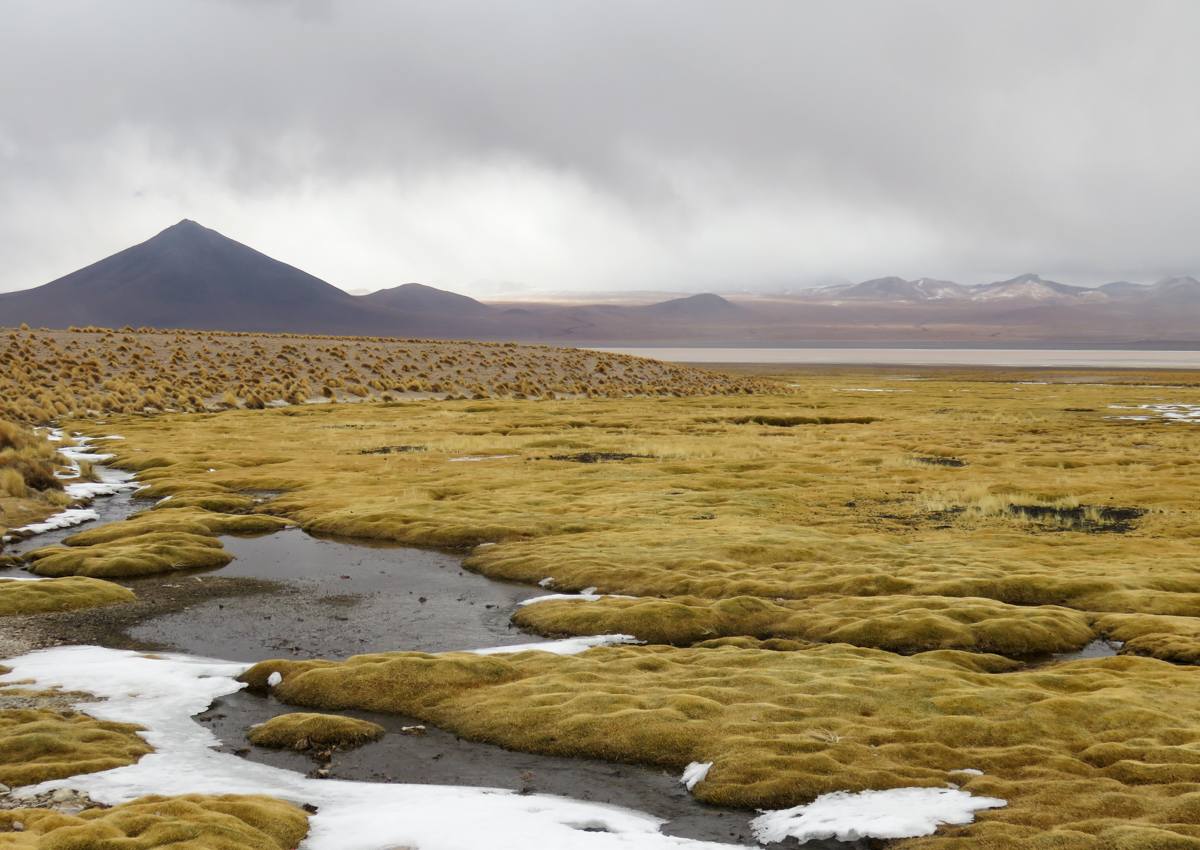

Photo by Ben
We stood at the lagoon for as long as we could tolerate the windchill and then hopped back into our vehicles. It was another cold night (this time at 4300 m elevation) and the wind was highly unpleasant. Fortunately, there was a canyon that provided some decent protection against the elements.
That night was tough for me and Gregor because our propane furnace stopped working. The high altitude didn’t provide the right pressure conditions to light the furnace and we spent the night in sub-zero temperatures without heat. Gregor was super frustrated. He knew that the Bolivian altiplano would be the coldest part of our Pan-American trip and he installed that Propex heater specifically for this high-altitude stretch. Ironically, the heater was not designed for high-altitude use.
Gregor tweaked with the propane regulator for hours trying to get the furnace to light, but it just didn’t work.
We weren’t the only one’s having trouble with altitude. The thin air was messing up Wally’s ability to power up the inclines, and it was causing LoJo to guzzle lots of precious gas.
On our third morning, we decided to go back to Laguna Colorada to see if we could find some flamingos. They were really far away, but we managed to see them with our zoom lenses. All of us wondered how they could possibly survive in such harsh conditions. Nature is kind of wacky that way.
On our way back to the canyon, we ended up on the wrong track and had to cross a series of berms to get back on route. LoJo traversed with no problem but Lucky got royally stuck in soft sand. Gregor and I took turns digging with our avalanche shovel, Ben pulled out his MaxxTraxx sand ladder, and Paula came out with all her levelling blocks. Everyone panted in the thin air as they dug and pushed against the howling wind, but Lucky just wasn’t moving.
Gregor pulled out our shiny white tow-strap from its factory-sealed wrapping and latched it onto Lucky. John hooked the other end to his truck and LoJo effortly hauled us out like she was pulling a little beach toy out of the sand. Thank goodness we were with friends (with a Toyota!).
As we gained elevation, the air got colder and thinner, which made our engines work super hard. It’s no secret that VW vans are rather underpowered. The best way for a Westy to maintain momentum is to keep the revs up, which means that we have to drive faster than normal. Wally was struggling the most, so he ended up at the front of the pack.
The Bolivian Customs office sits at a ridiculous elevation of 5033 metres. What’s even more ridiculous about this office is that it’s located 80 km north of the Bolivia-Chile border, in the middle of undeniably harsh altiplano terrain. Since you have to deviate from the Lagunas Route to get to it, it’s easy to miss. We heard about other overlanders driving past this office and ending up at the border, only to be told to backtrack 80 km to get their Customs paperwork done. Thanks to the iOverlander app, we found the Customs office without trouble.
We spent our third night on the Lagunas Route at Polques Thermal Springs. Unlike our other campsites, this place had a pay-to-use bathroom, a canteen, and a concrete thermal pool. Ben and John braved the cold weather to soak in the pool, but the rest of us just holed up in our campers. In retrospect, I probably could have used a soak because my skin was a mess – the air at that elevation is not only cold and thin, it is also very dry.
On our last driving day, we stopped at a place called the Dali Desert, a cluster of rock formations named after the famous painter’s surreal landscapes. I’m familiar with Dali’s work and I know a bit about rocks – I didn’t find this site to be particularly surreal. Still, it was nice to walk outside and feel the sun.
Towards the end of the Lagunas Route are two adjacent lakes: Laguna Verde (Green Lagoon) and Laguna Blanca (White Lagoon). At the time, both lakes had a milky mint green colour so I couldn’t figure out which one was which. One thing I can tell you is that it was damn windy.
We descended from the Bolivian altiplano to the Chilean desert on heavenly pavement. Like horses to a stable, we raced to the town of San Pedro de Atacama for much needed showers and celebratory drinks.
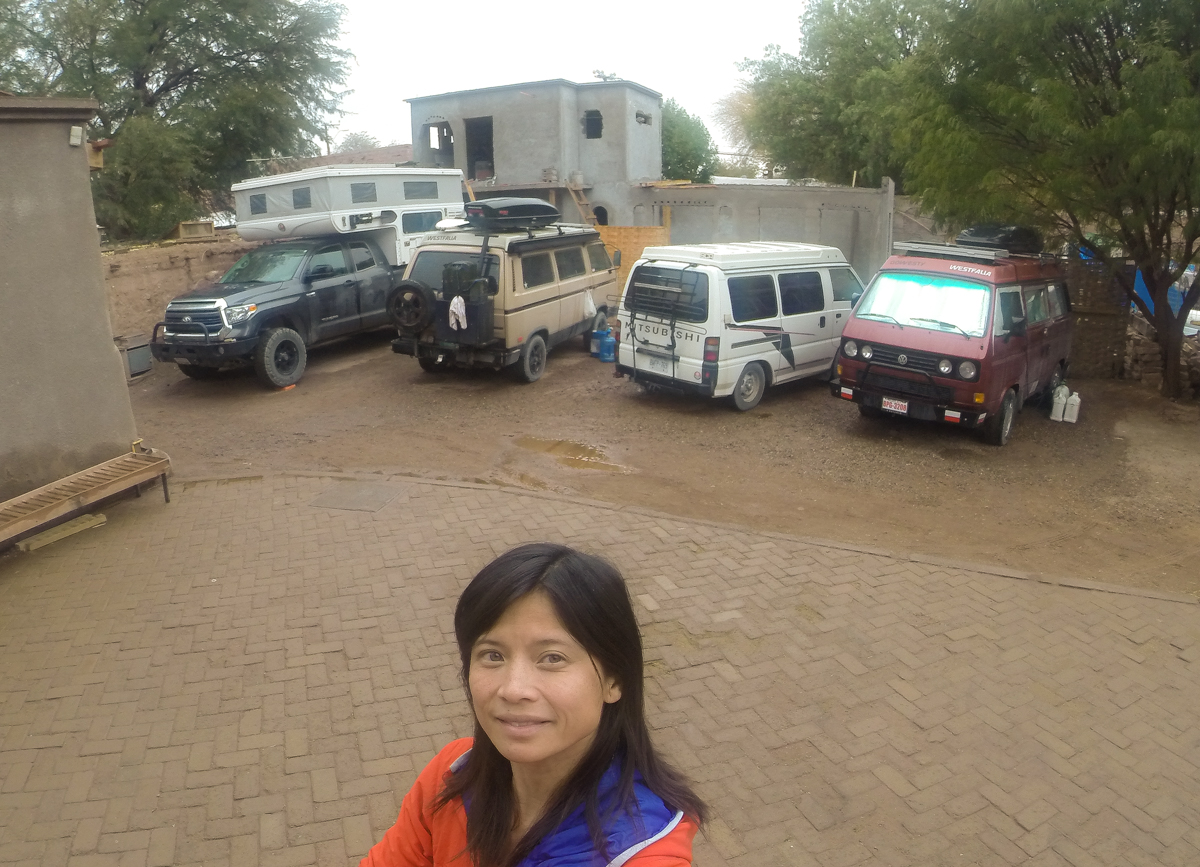
All of us squeezed into the parking lot of Hostal Puritama and hung out there for a few days. The nice part about the hostel was that it had a dining area where we could all eat together in relative warmth. During our four days on the Lagunas Route, we didn’t really dine as a group due to the harsh weather. The hostel setting allowed us to socialize in the way that caravans normally do.
After a week at the hostel, our caravan disbanded. One by one they drove off, leaving me and Gregor behind with Lucky. Gregor had been offline for two weeks while driving the Salar de Uyuni and Lagunas Route, so he had to stay at the hostel and catch up on work. I had work to do, too – I was going to officiate the wedding of my sister, Nikki, and needed to finish writing the script for her wedding ceremony. As nice as it was to return to civilization, it felt a little strange to be on our computers after our backcountry experience.
I asked Gregor today what he remembered most about the Lagunas Route. It wasn’t the colourful lakes or the flamingos or the rock formations. It was the challenge of finishing a route while being exposed to the elements: thin air, relentless wind, freezing temperatures, dry climate. It’s a bit like mountaineering – uncomfortable when you’re in it, but rewarding once you’re out of it. I suppose that’s our definition of “adventure”.

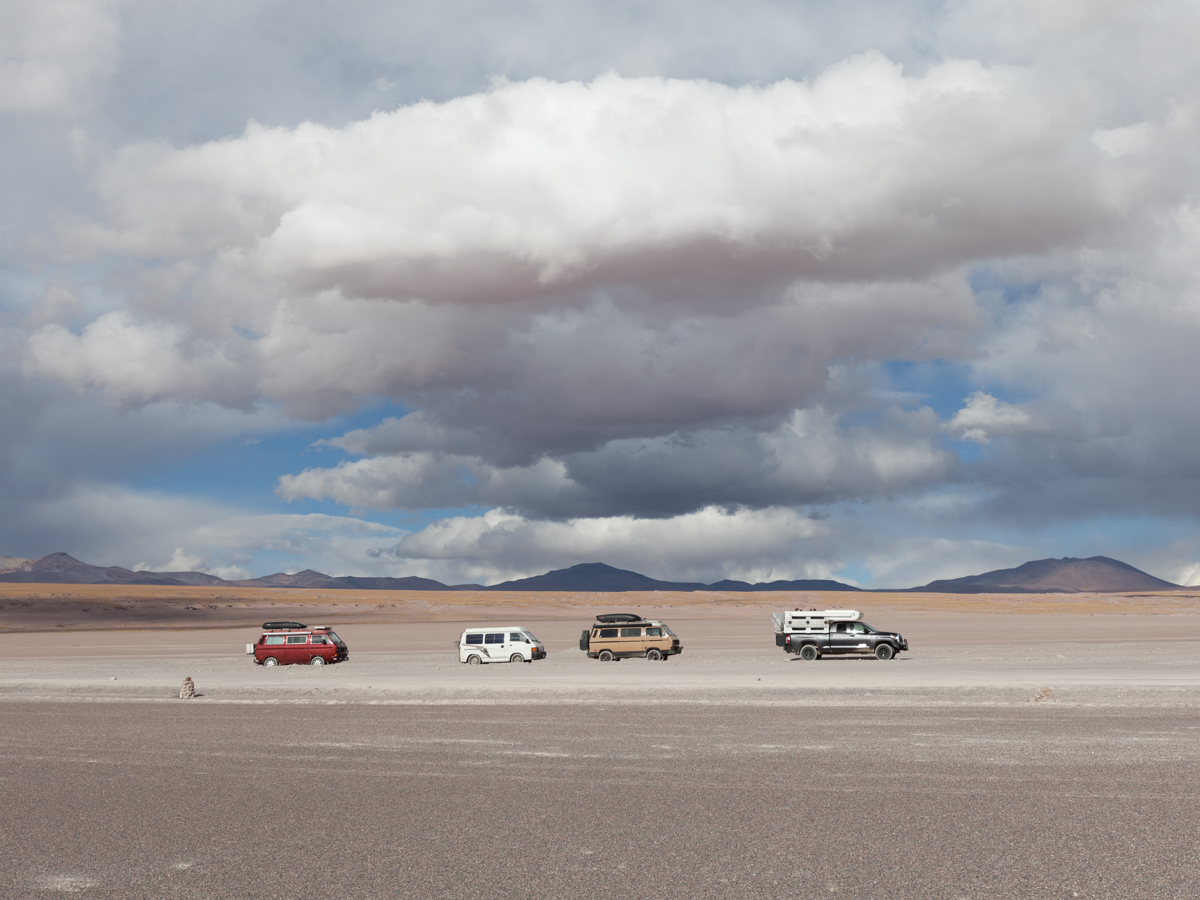
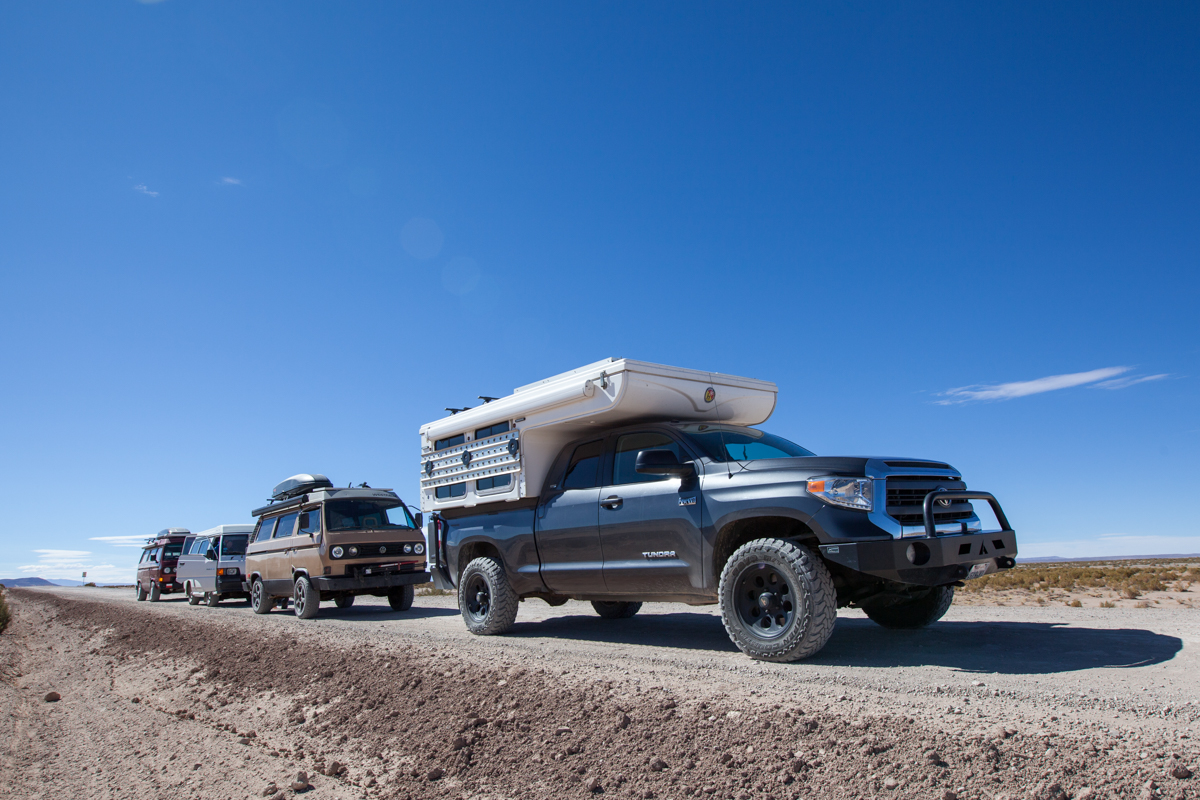
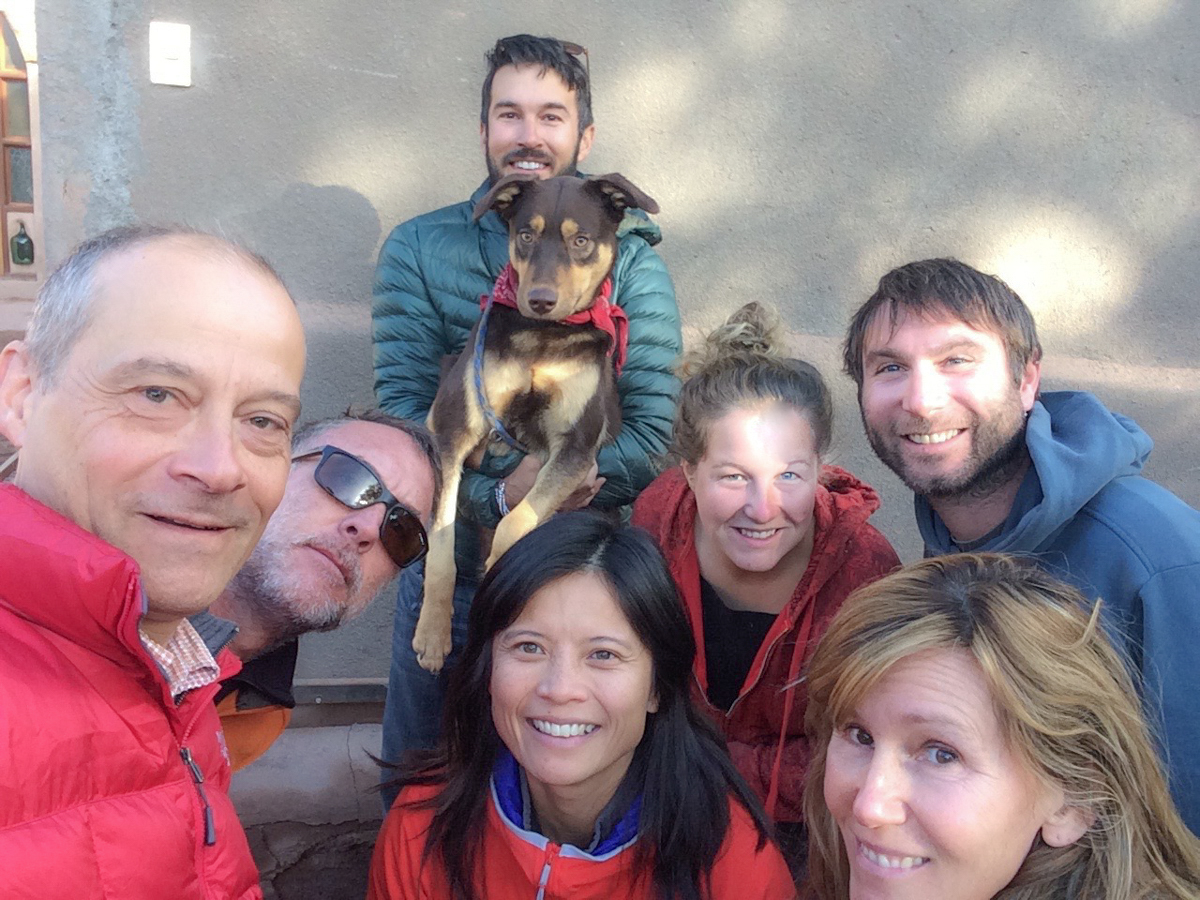
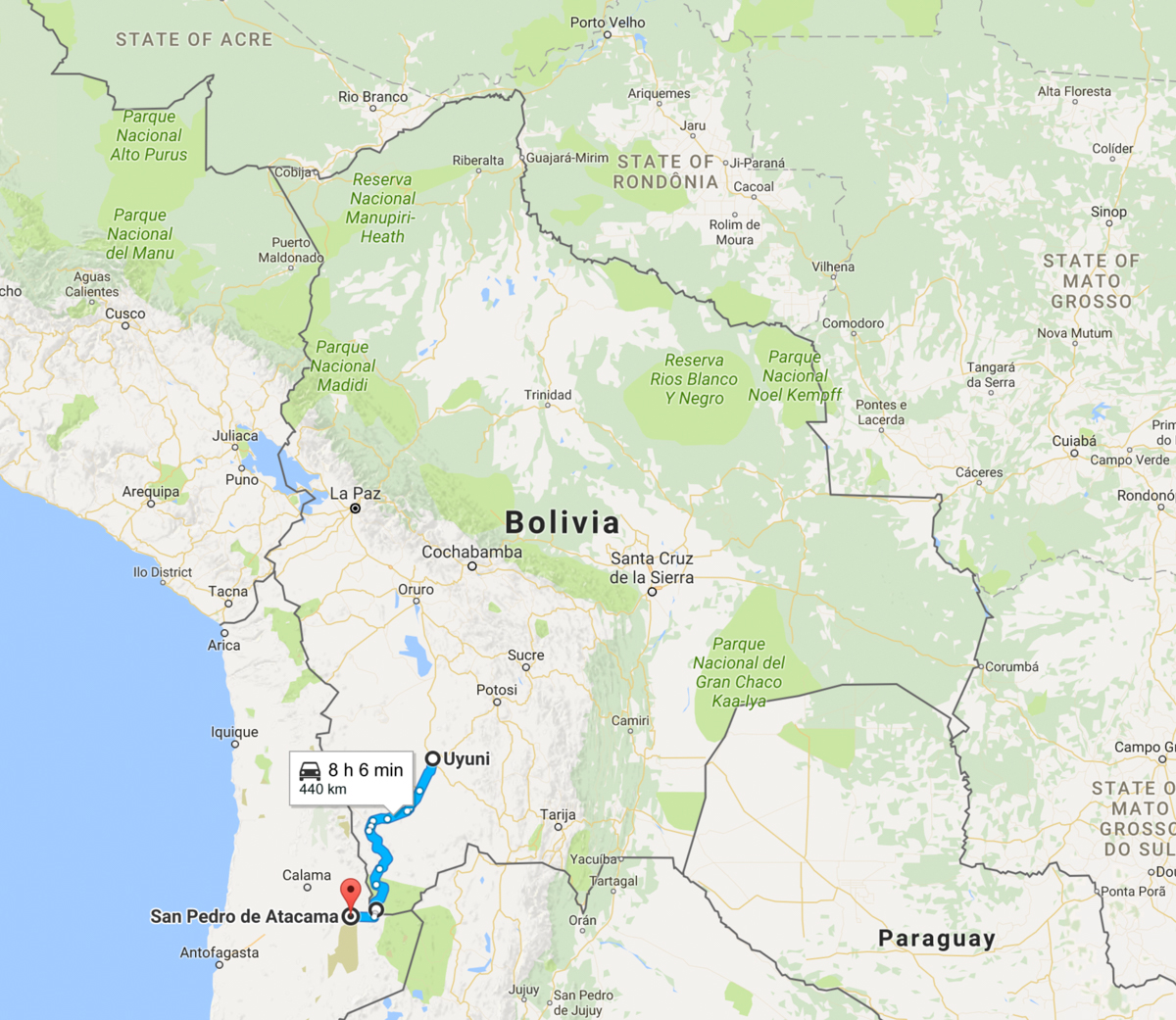
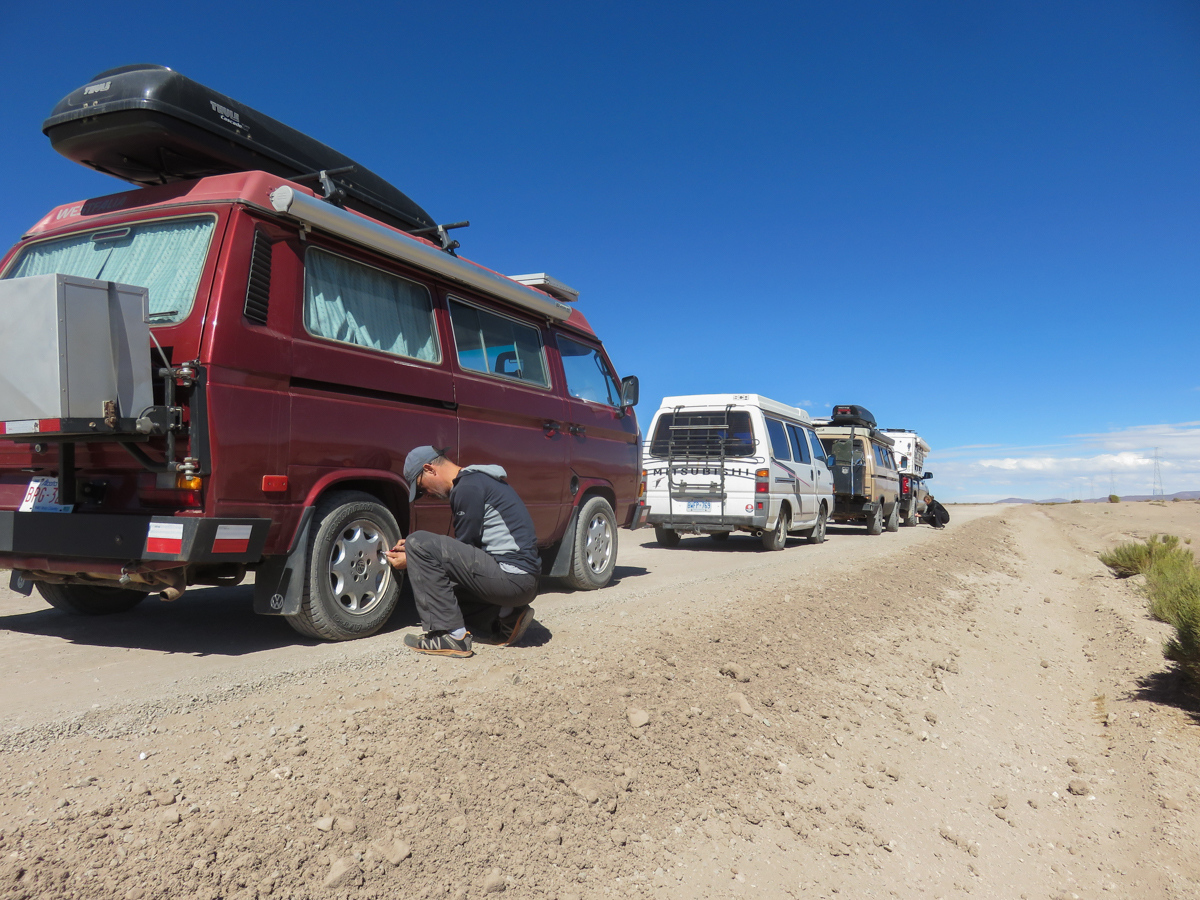
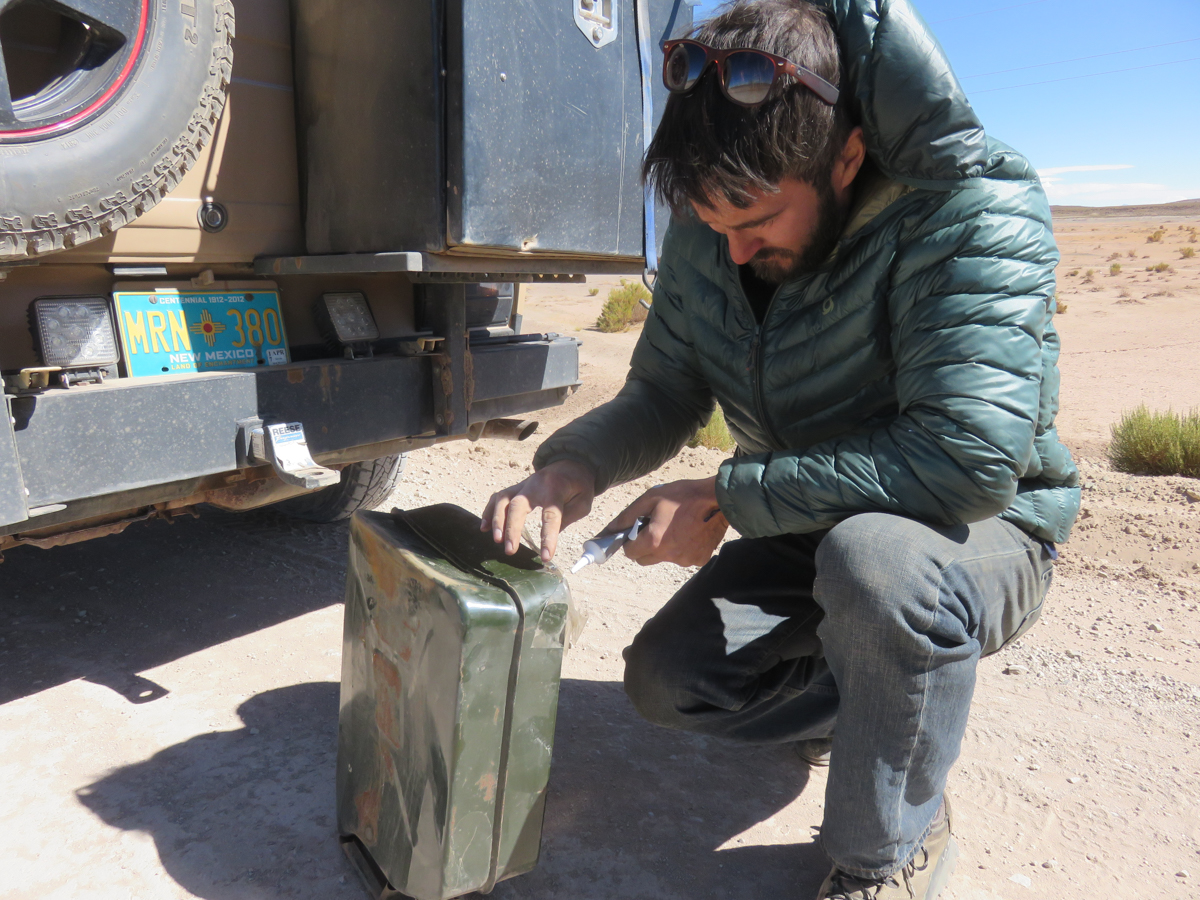


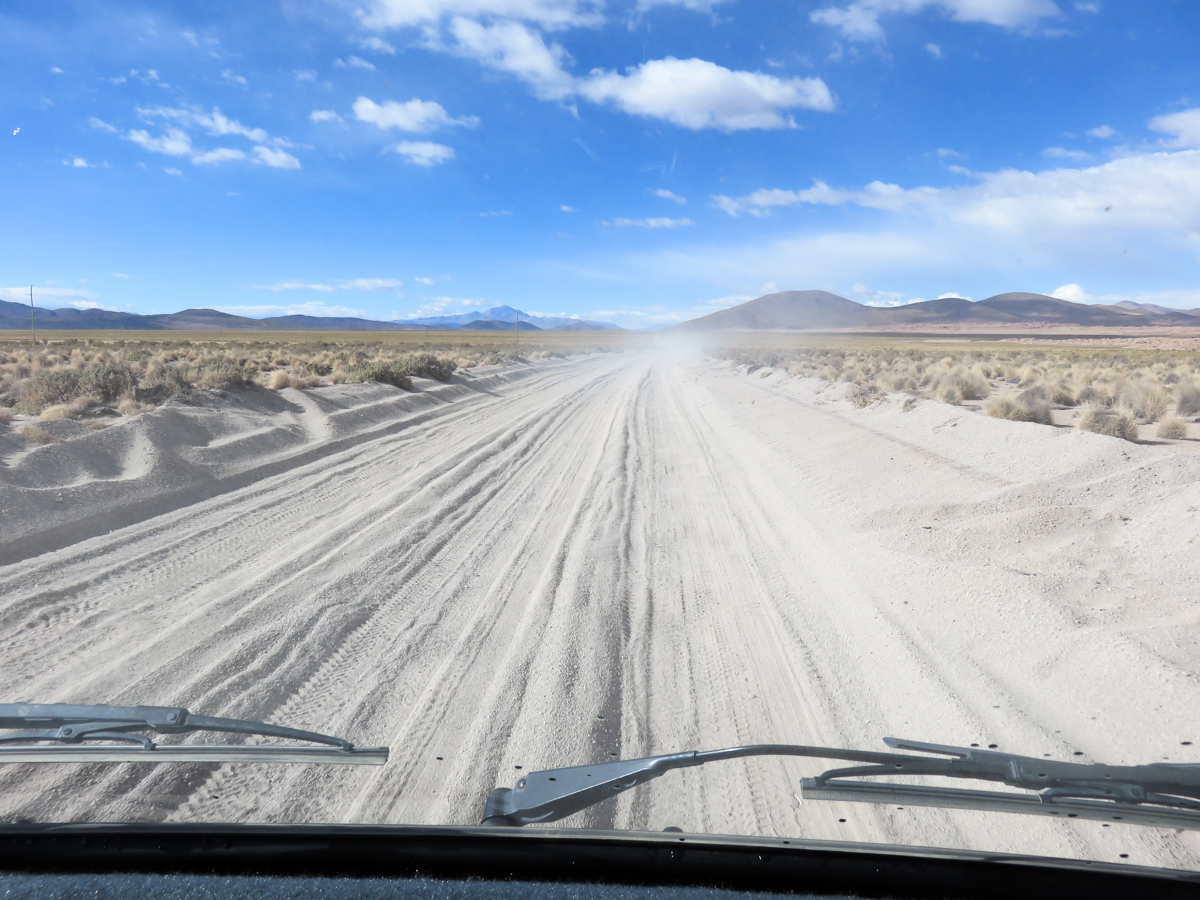
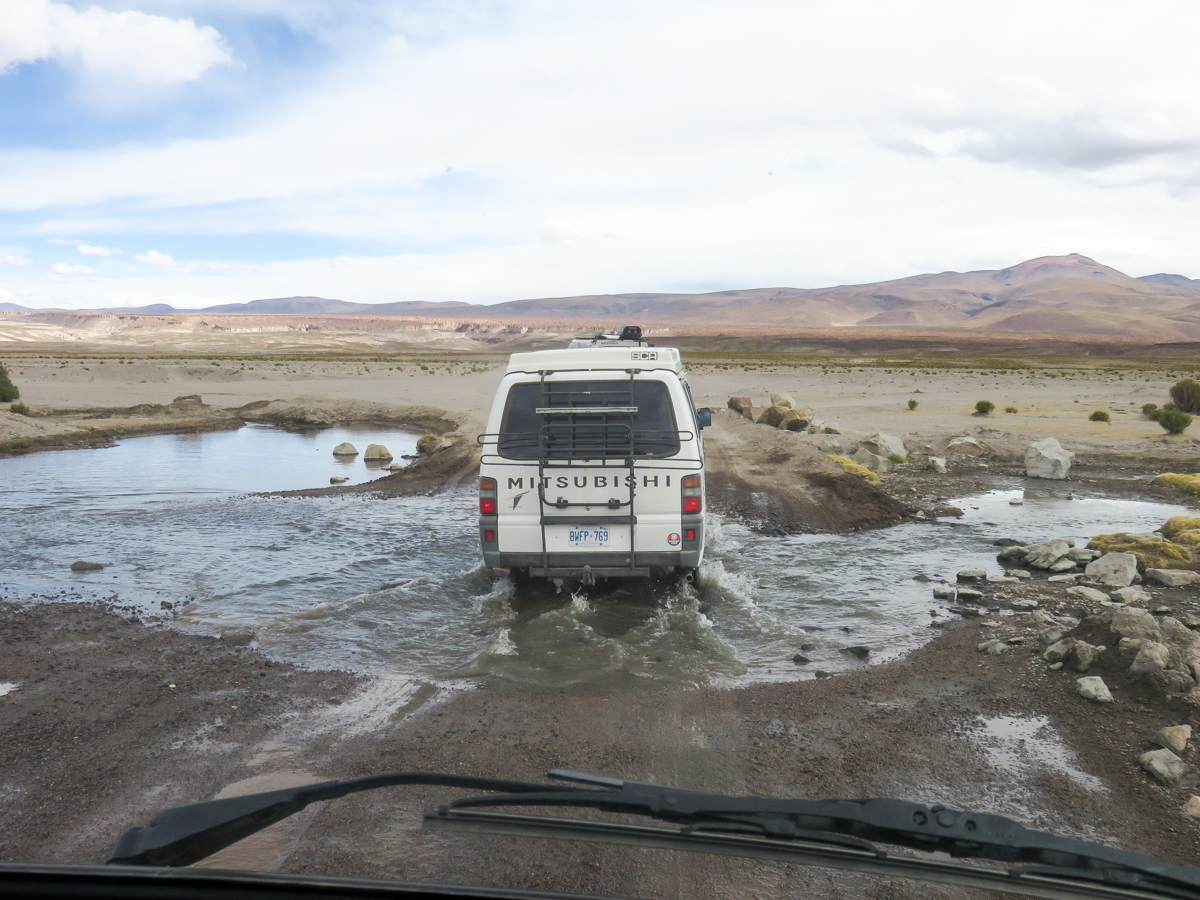
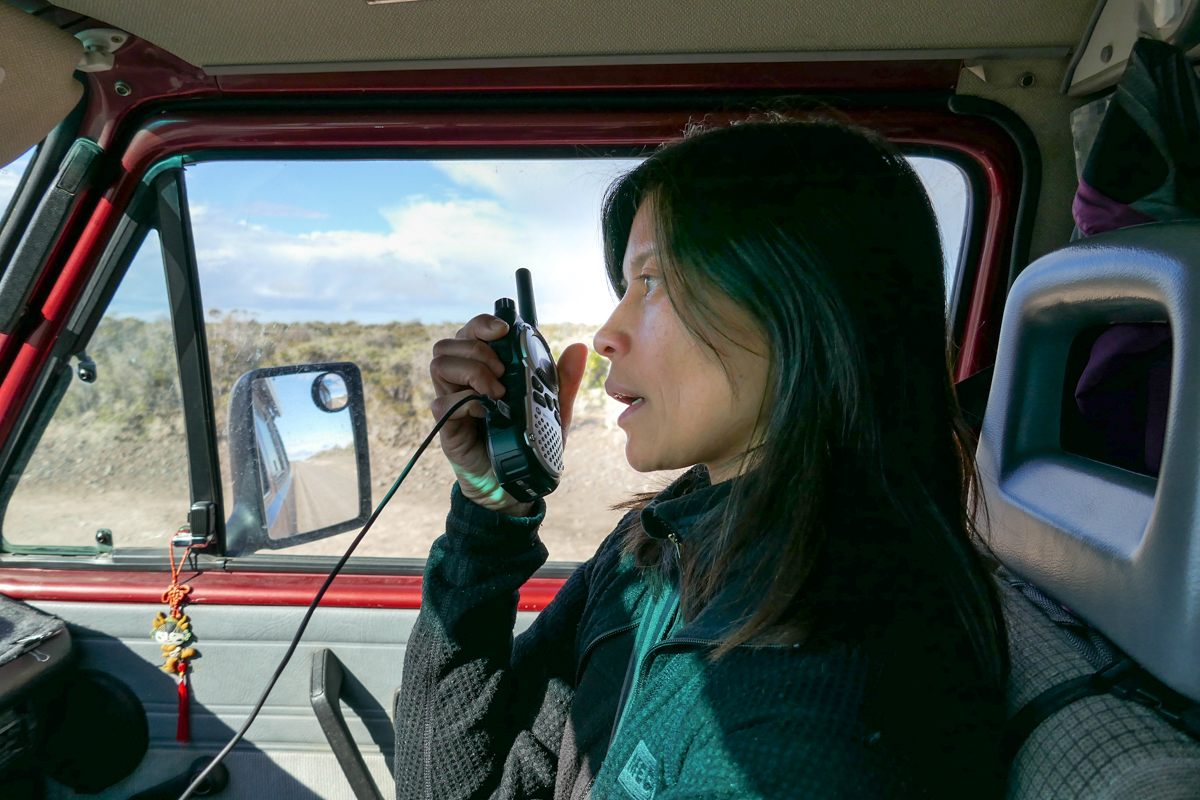
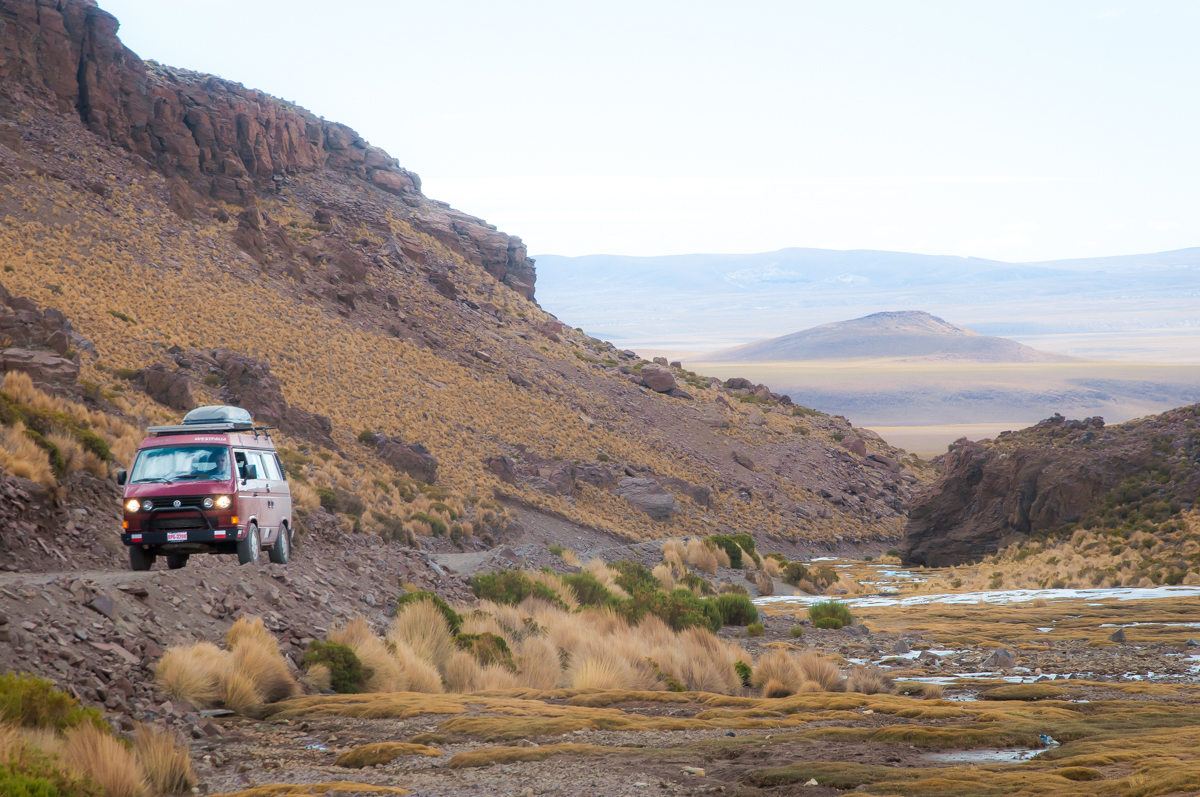
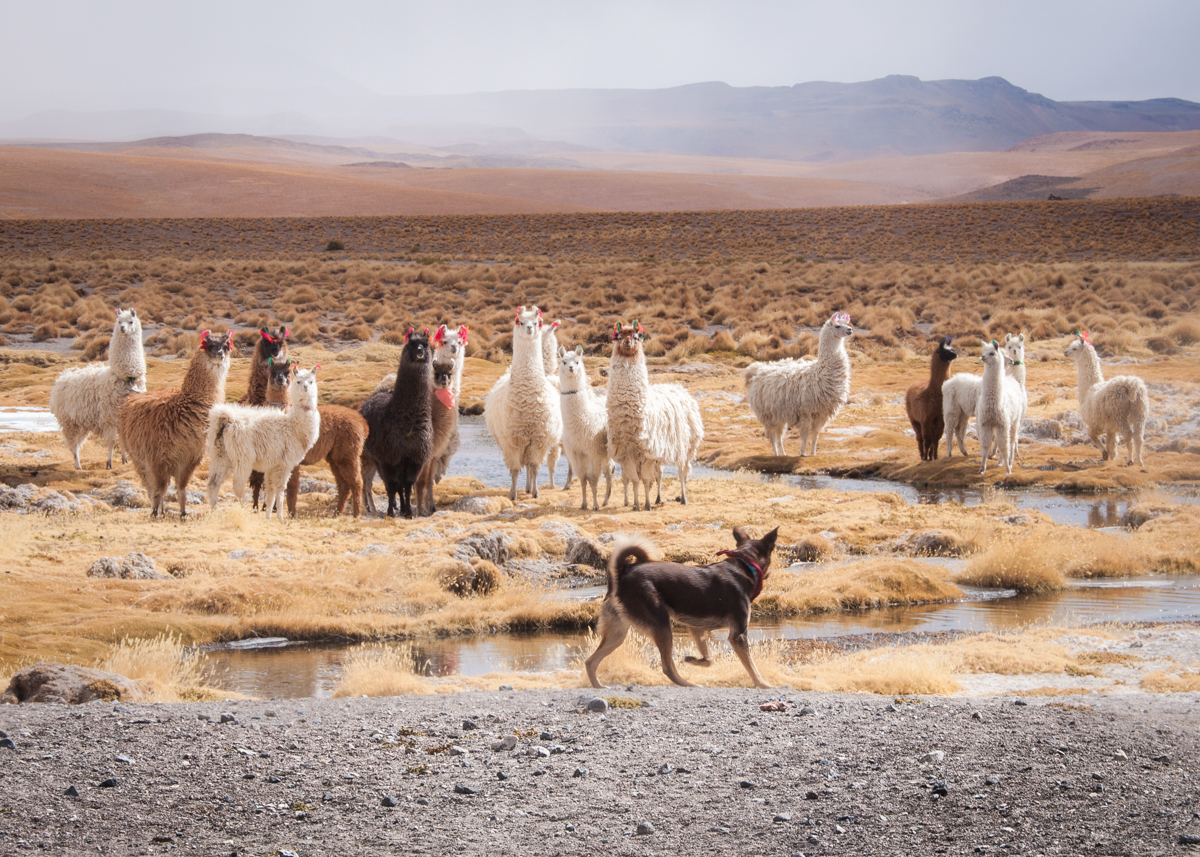
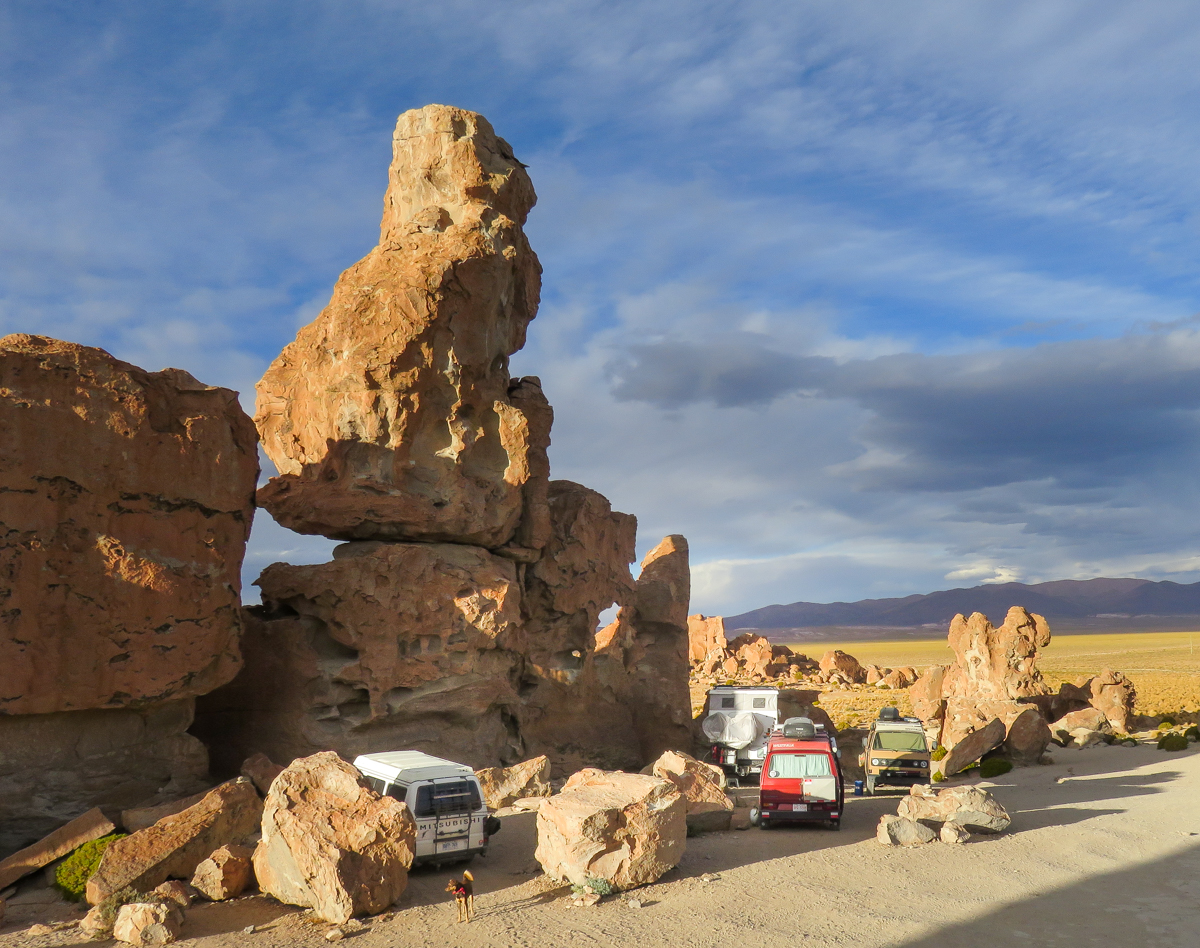
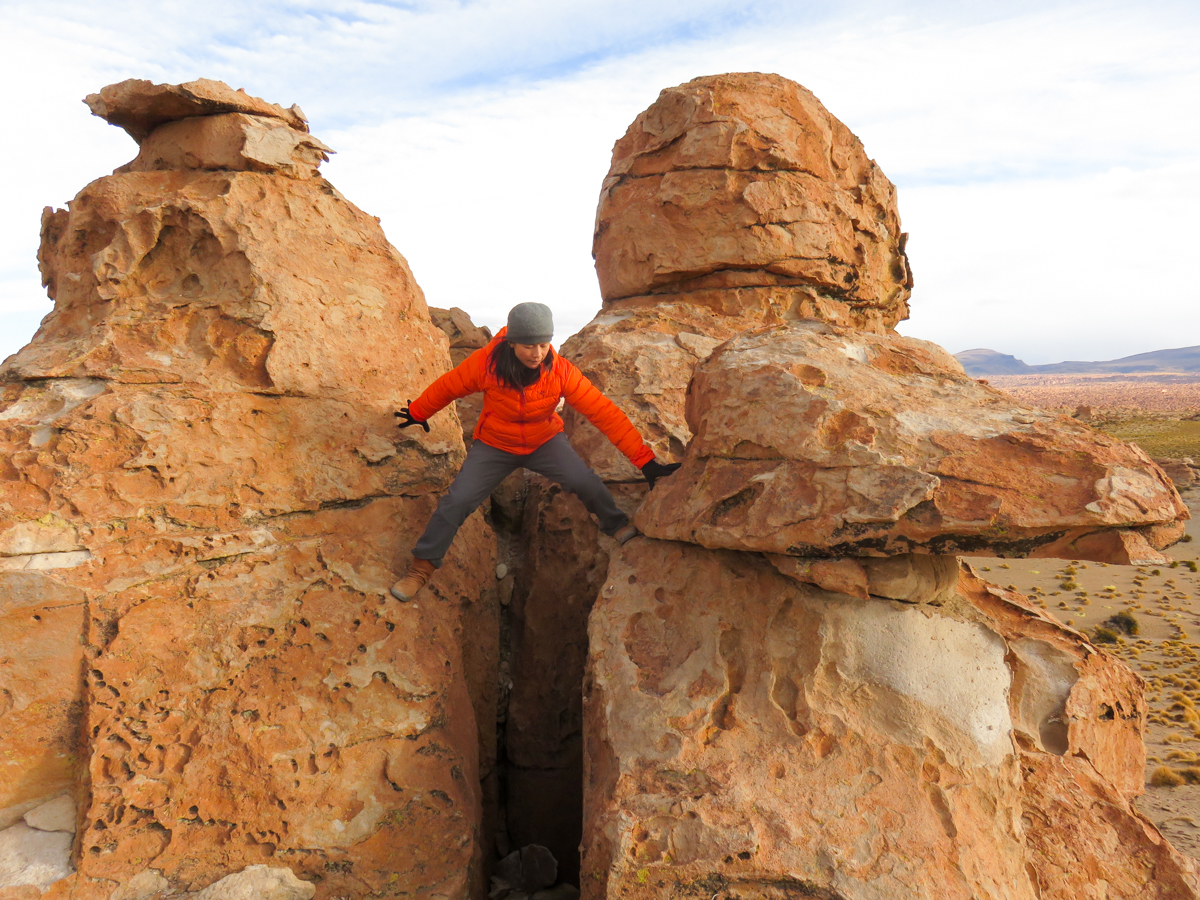

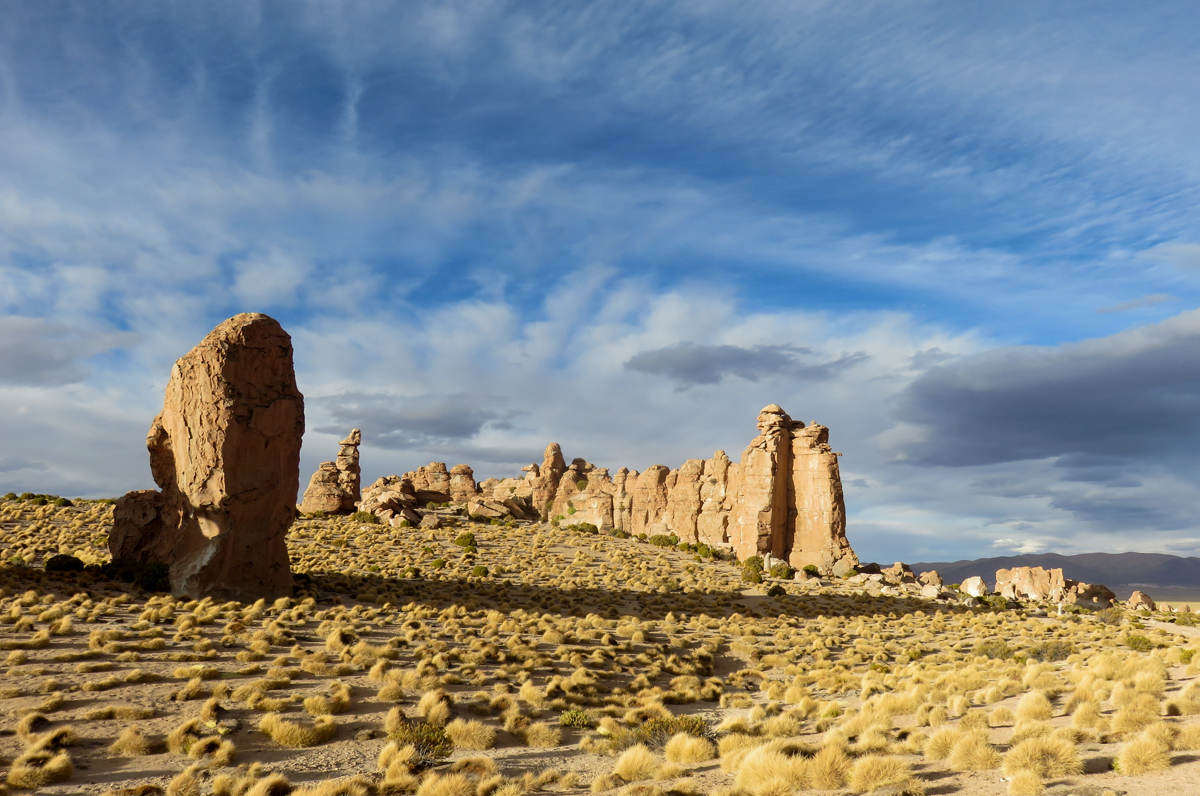
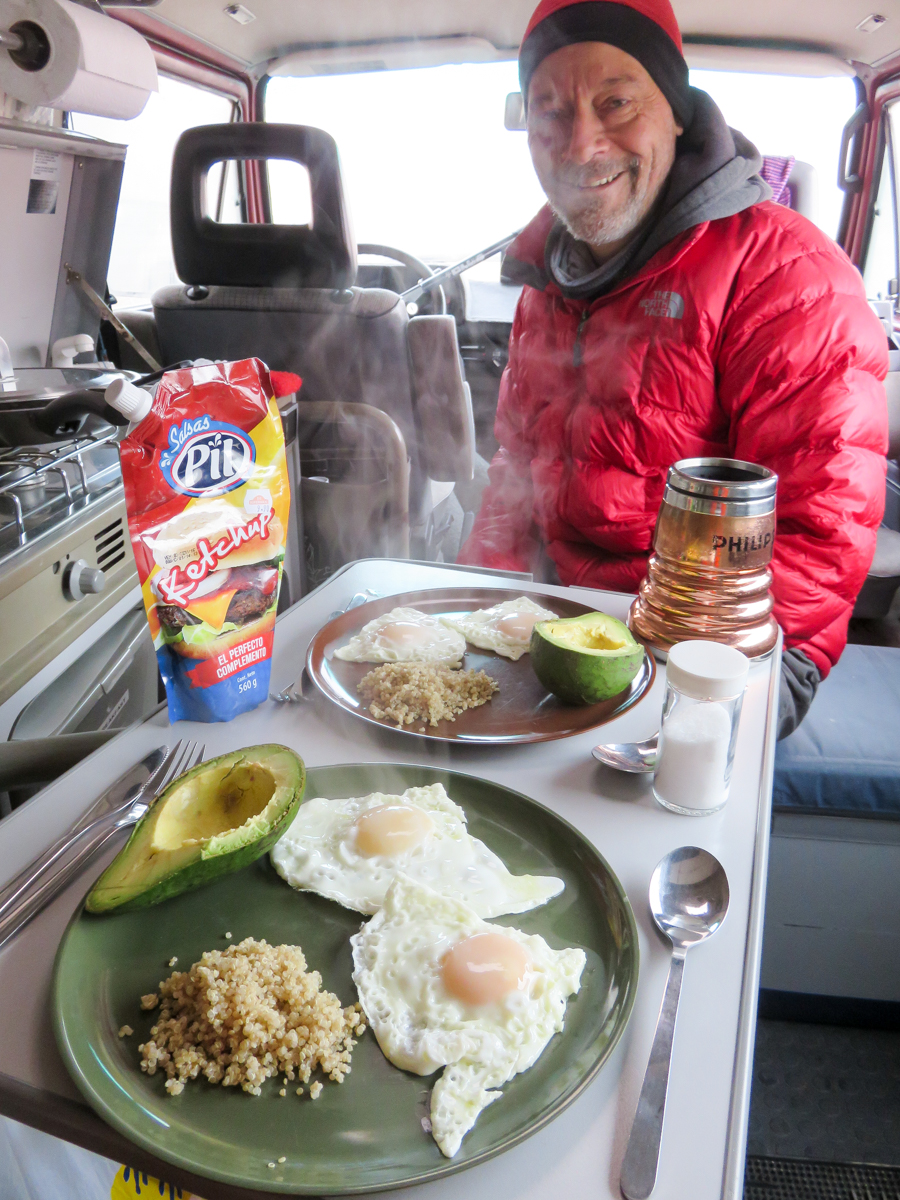
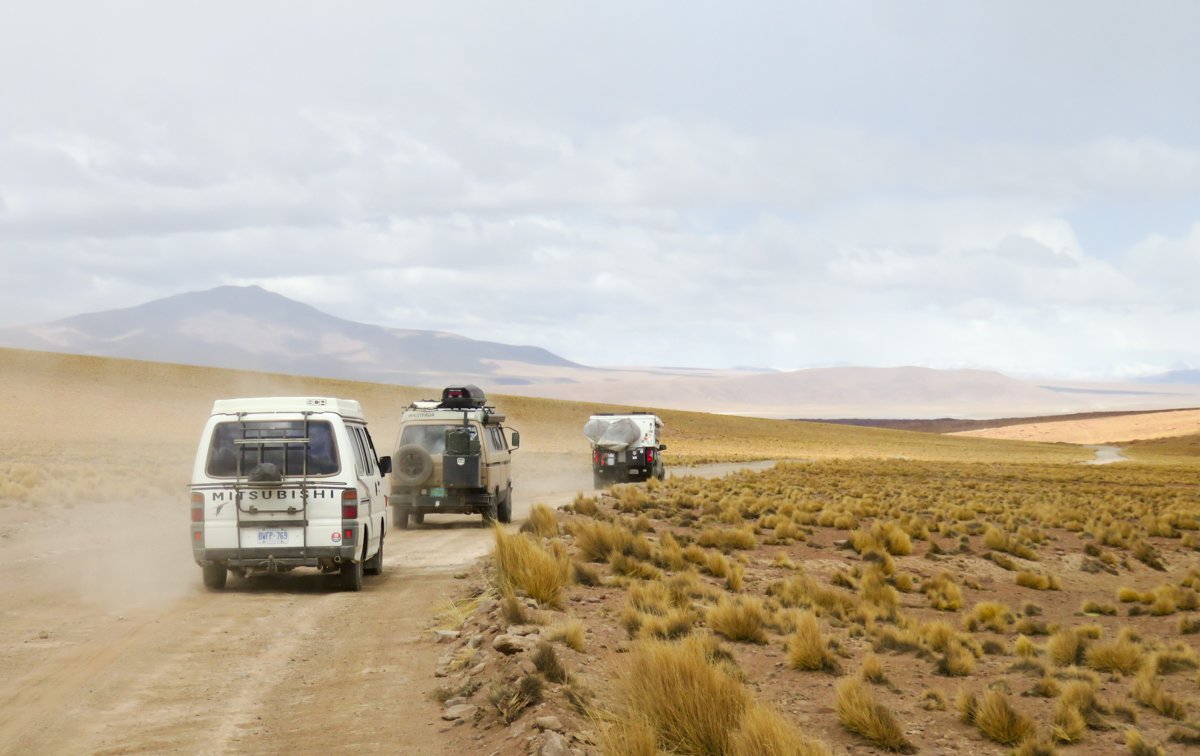
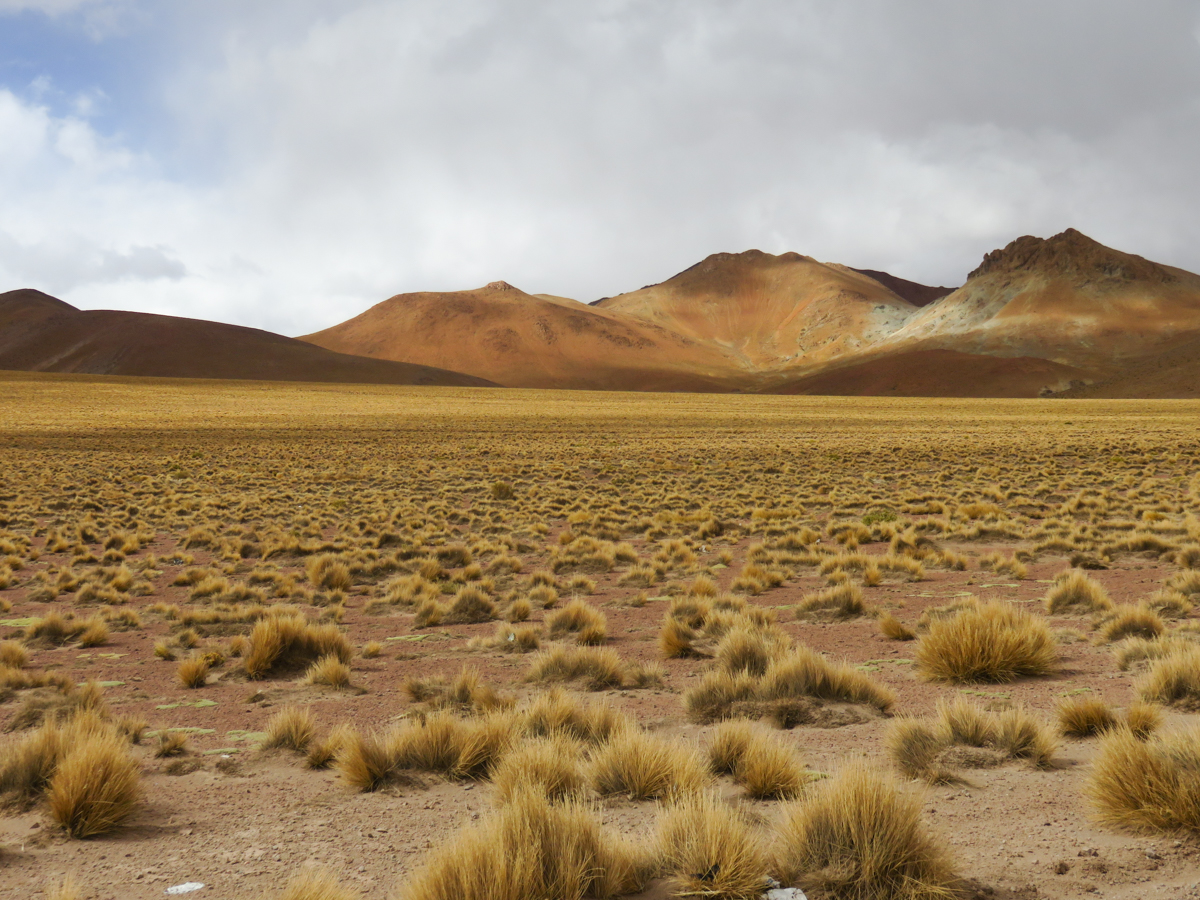
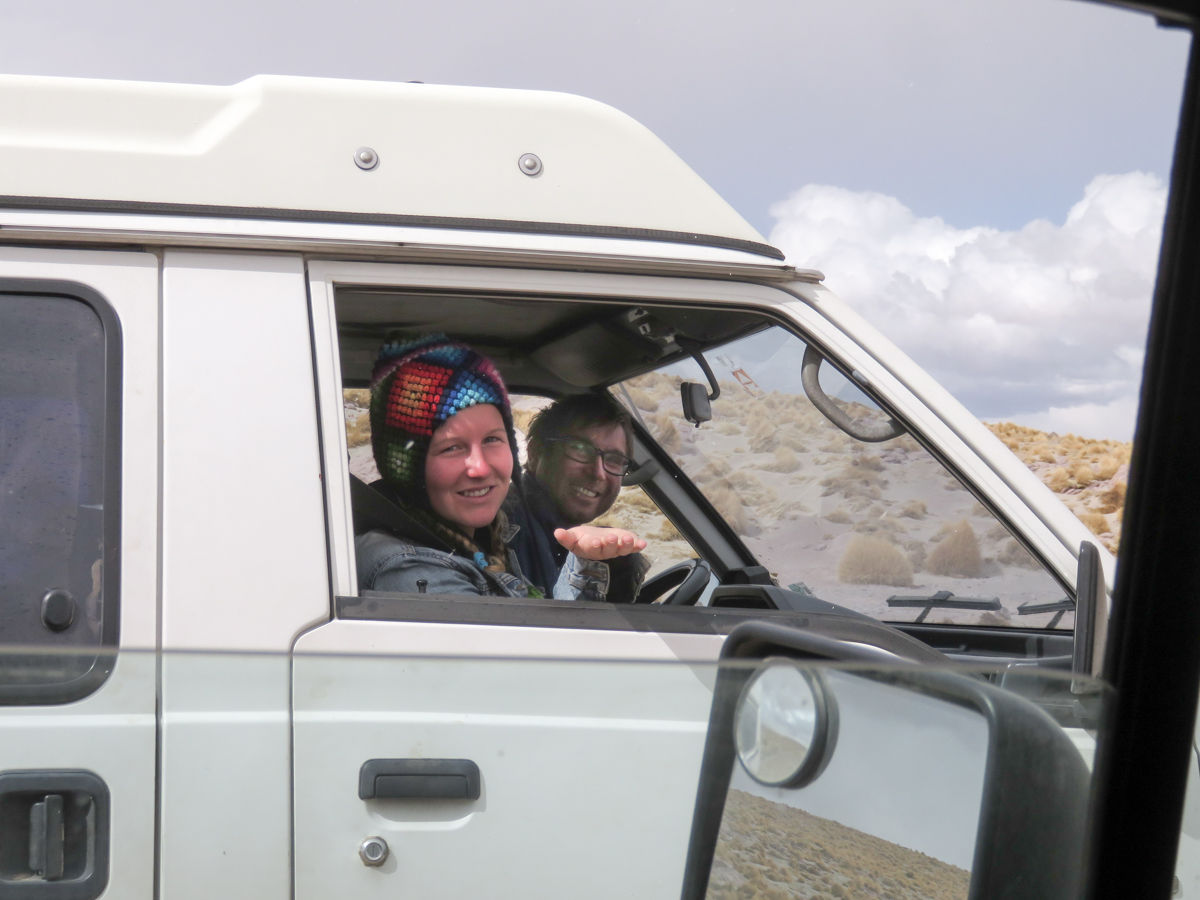
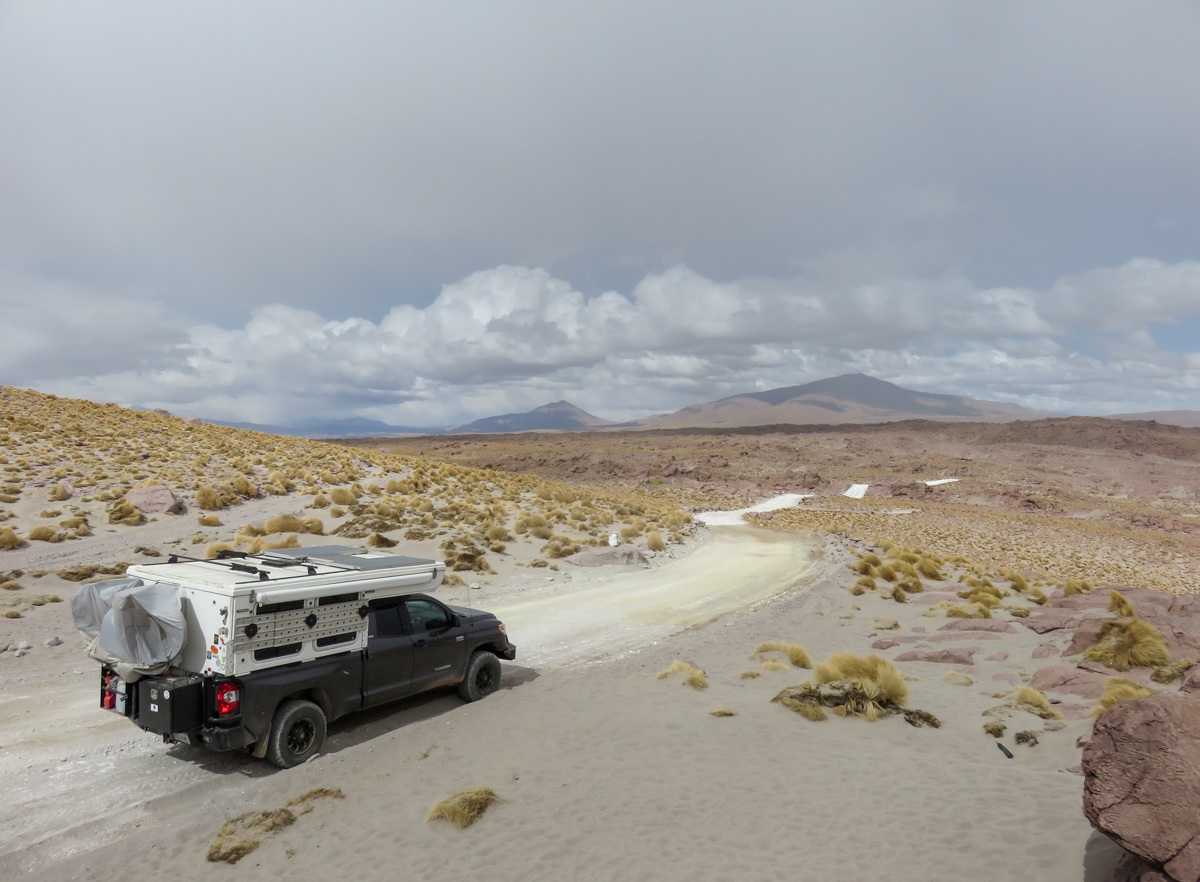
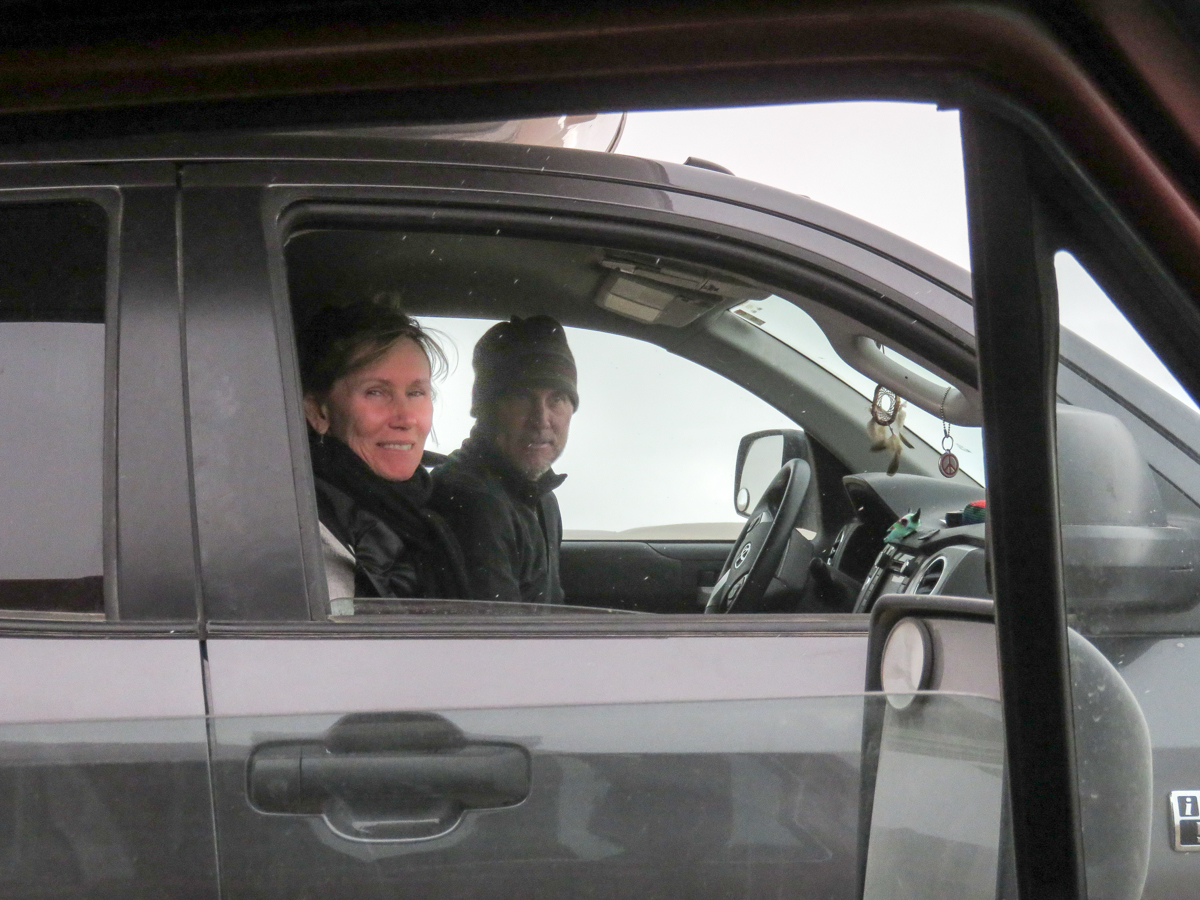
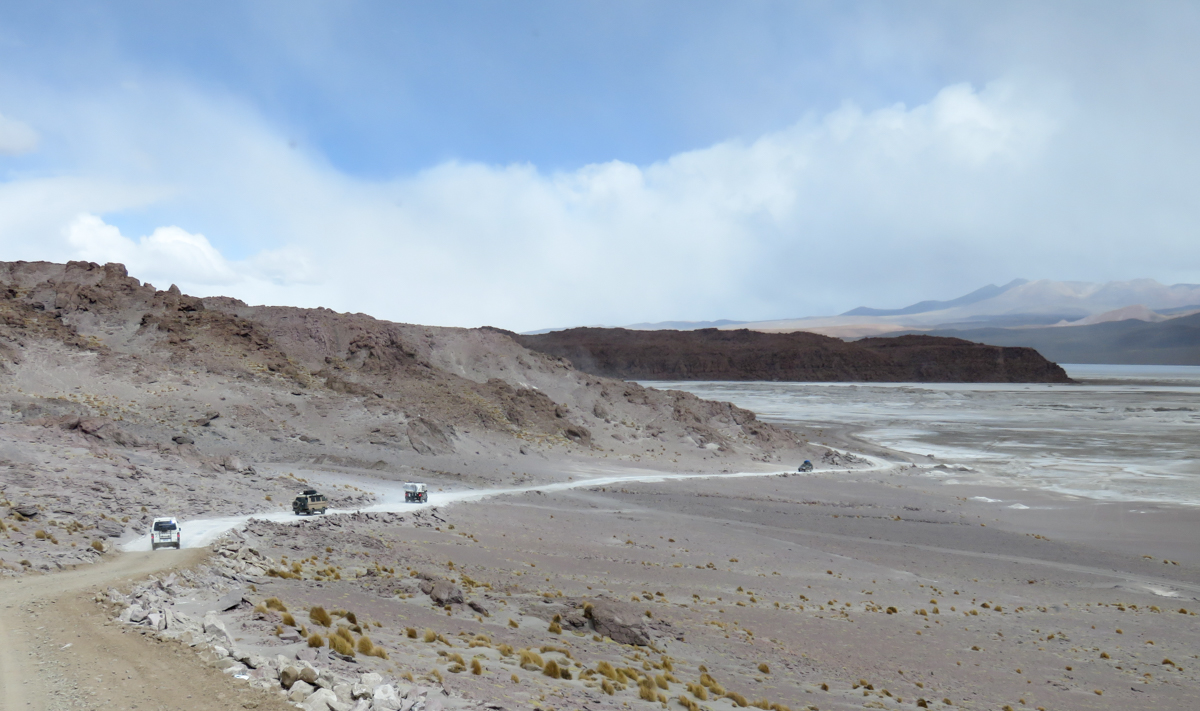
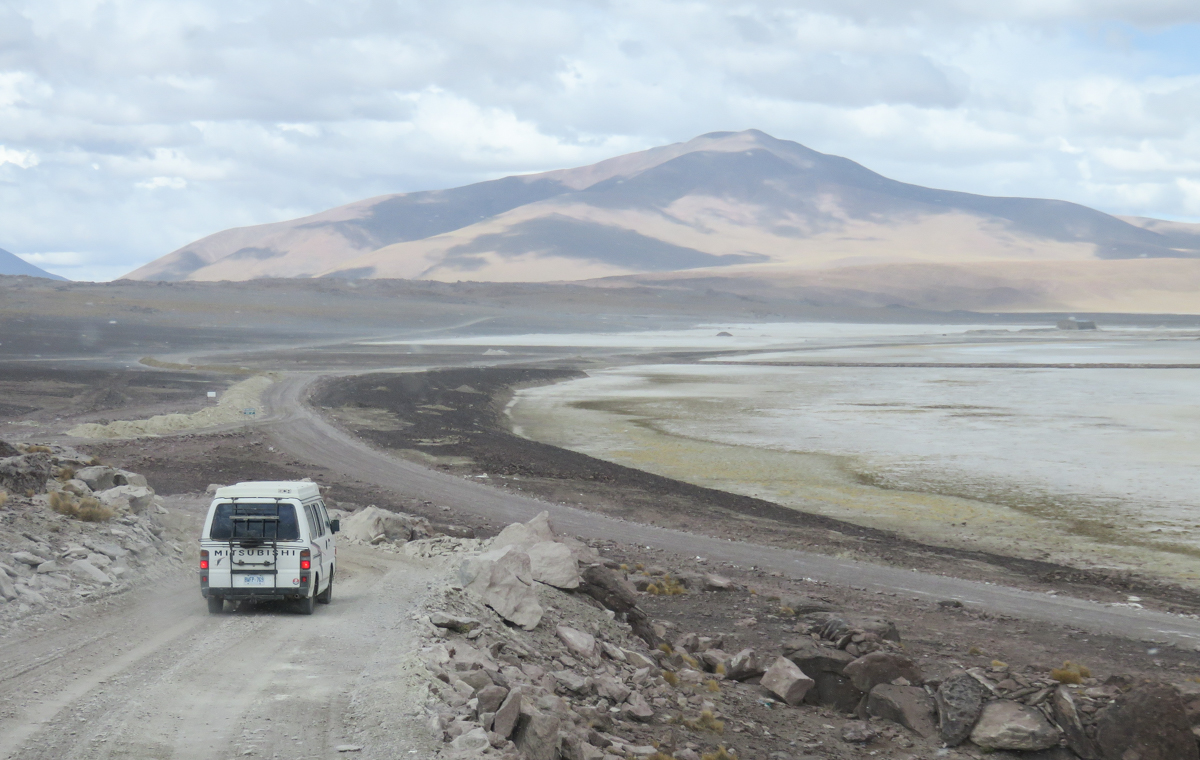
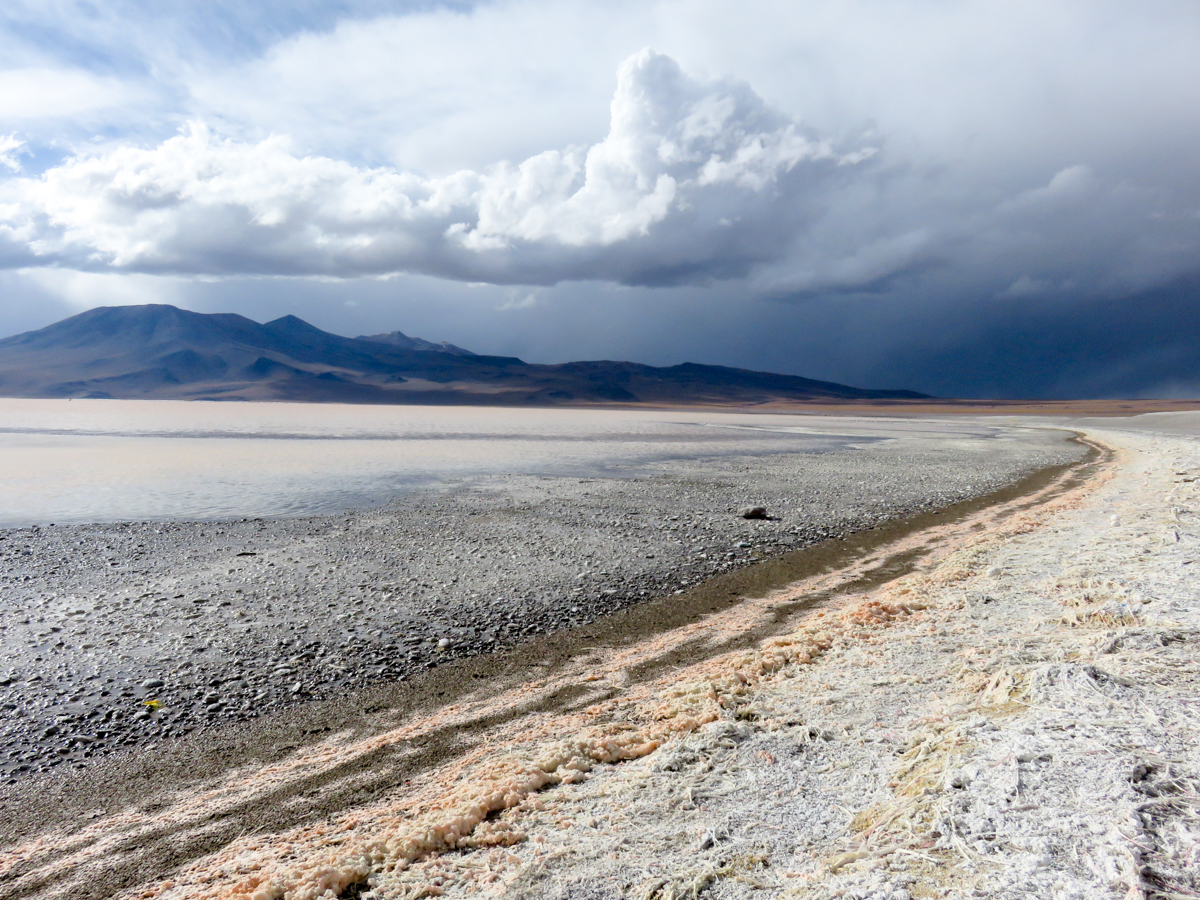
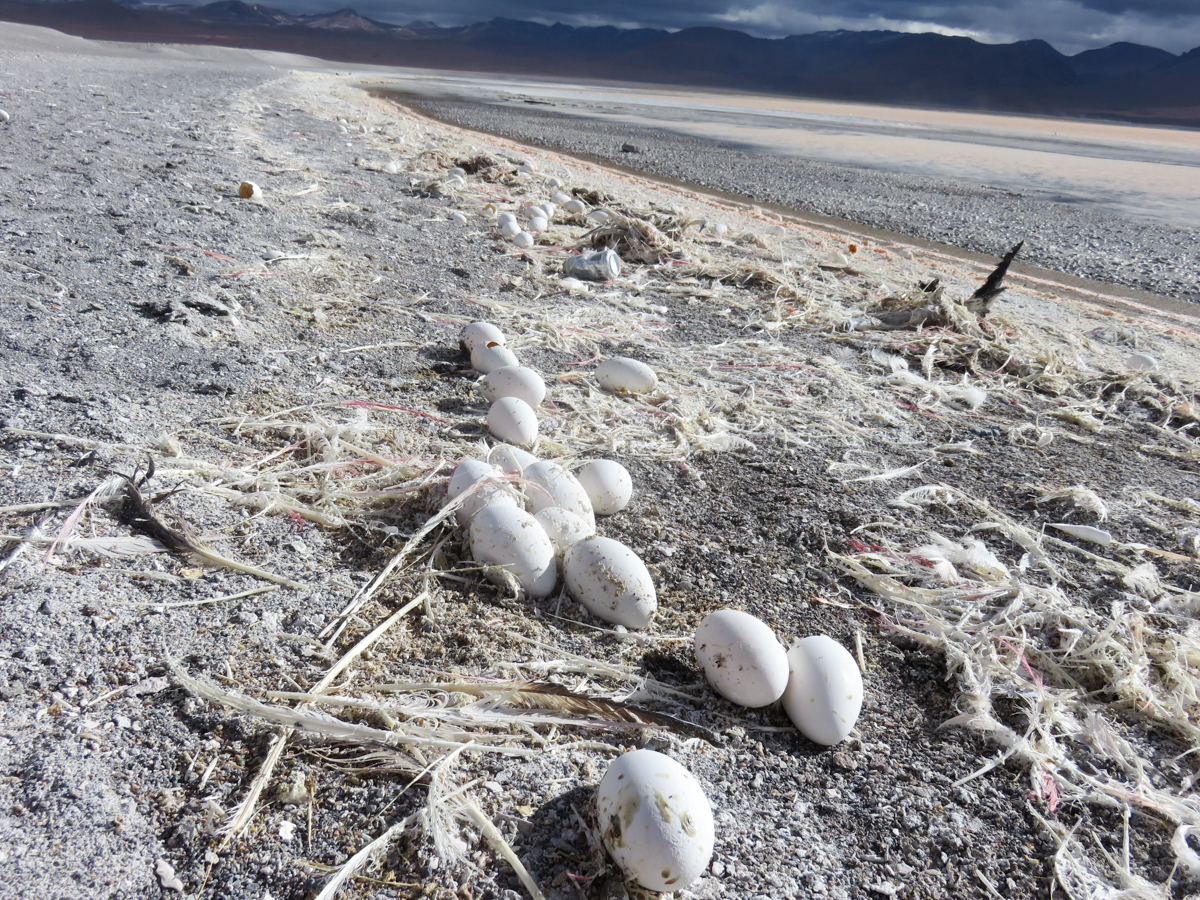
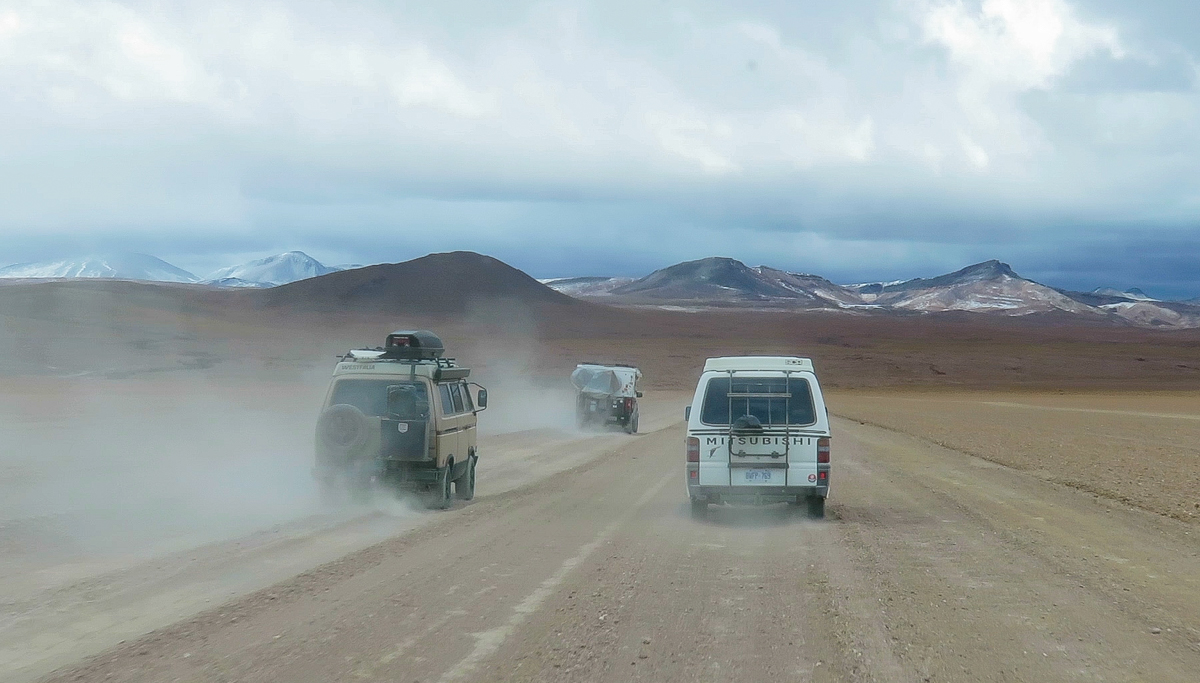
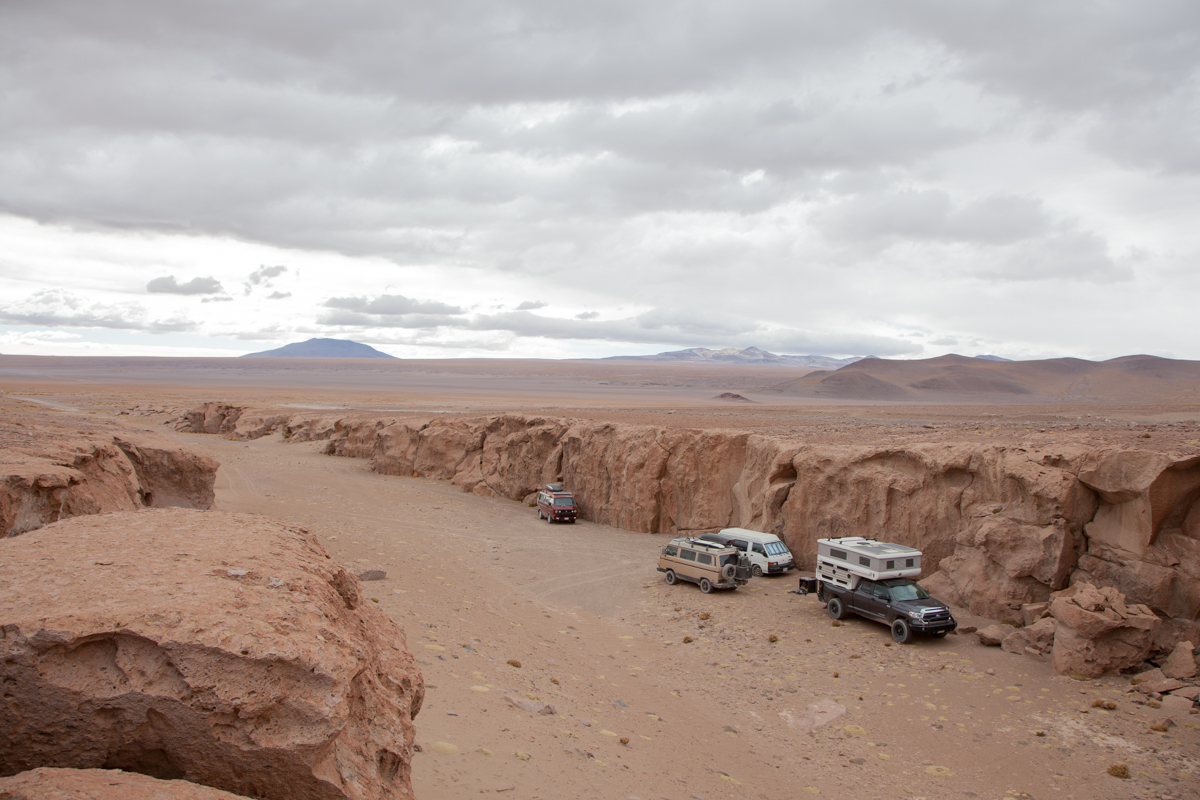
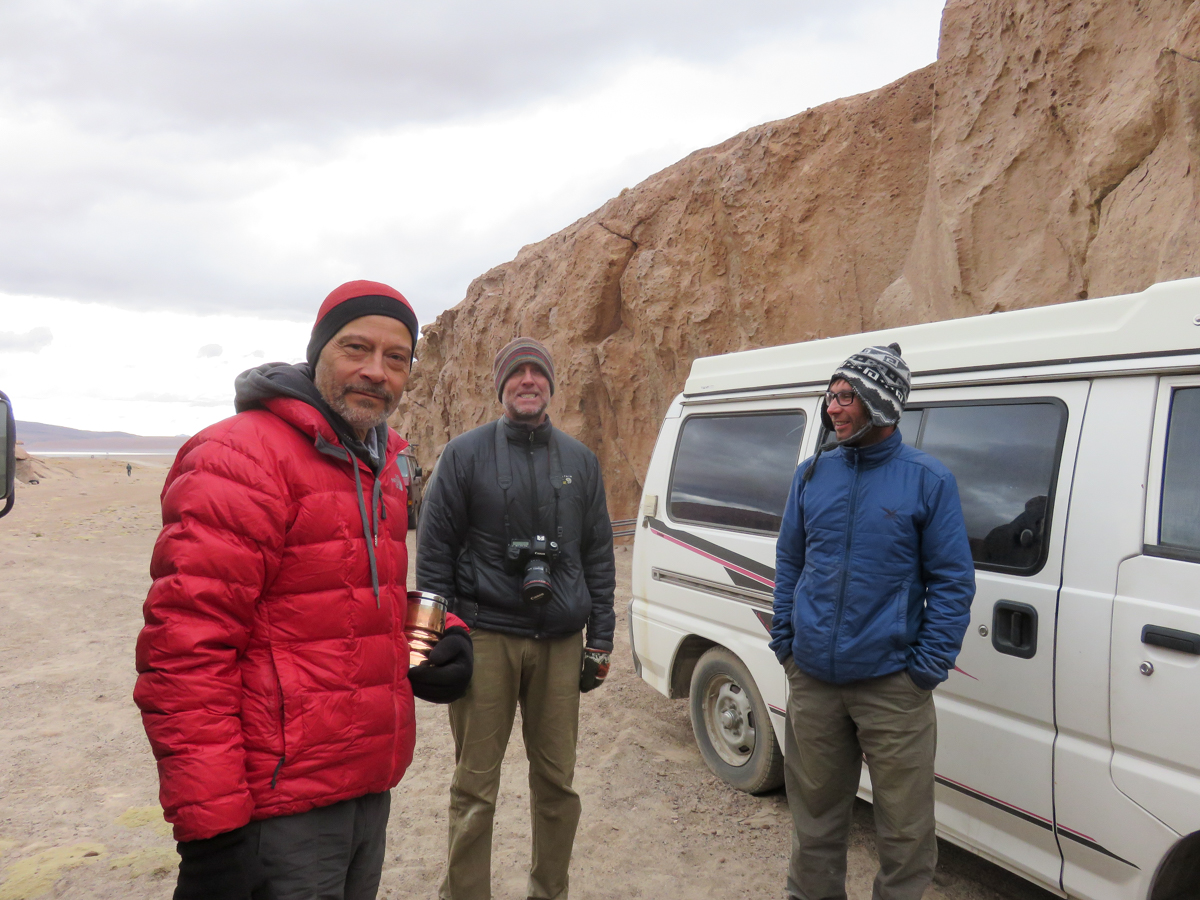
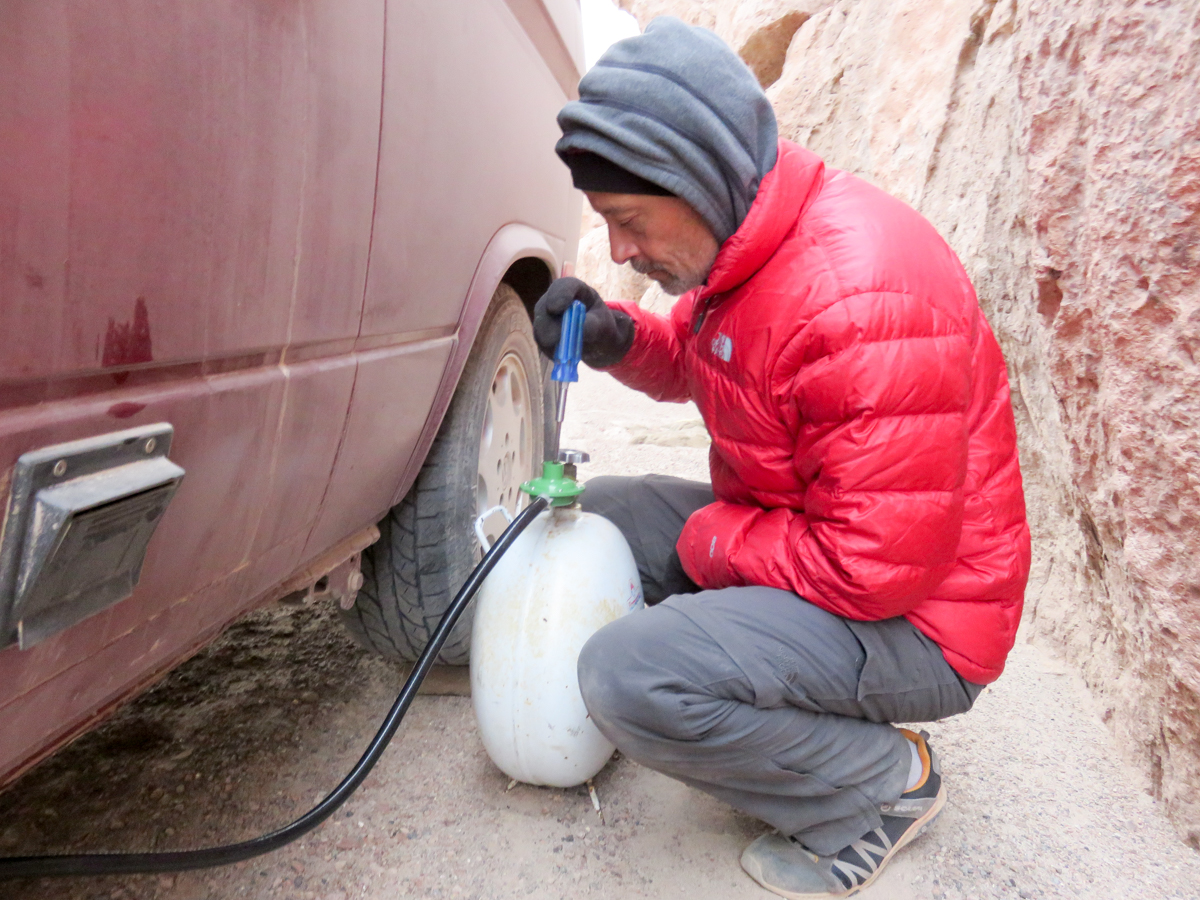
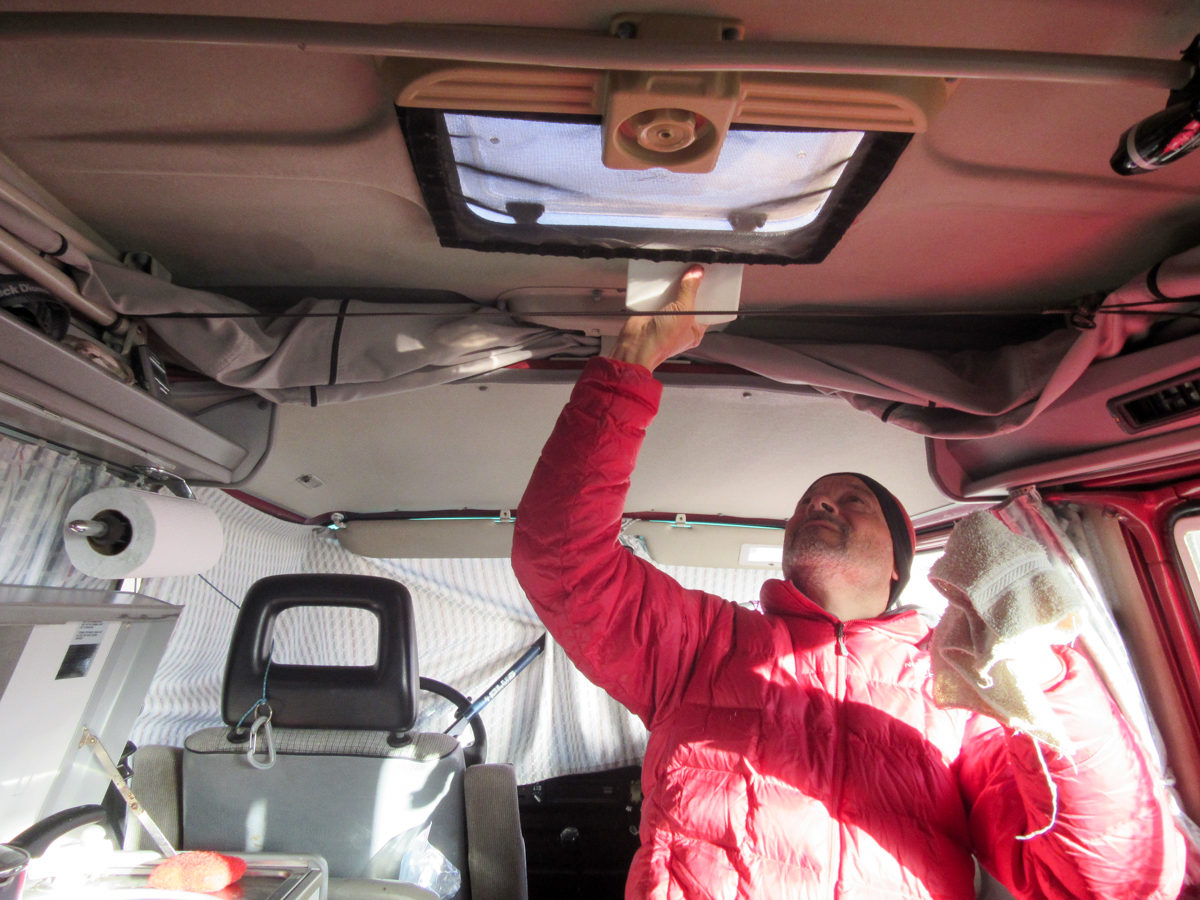
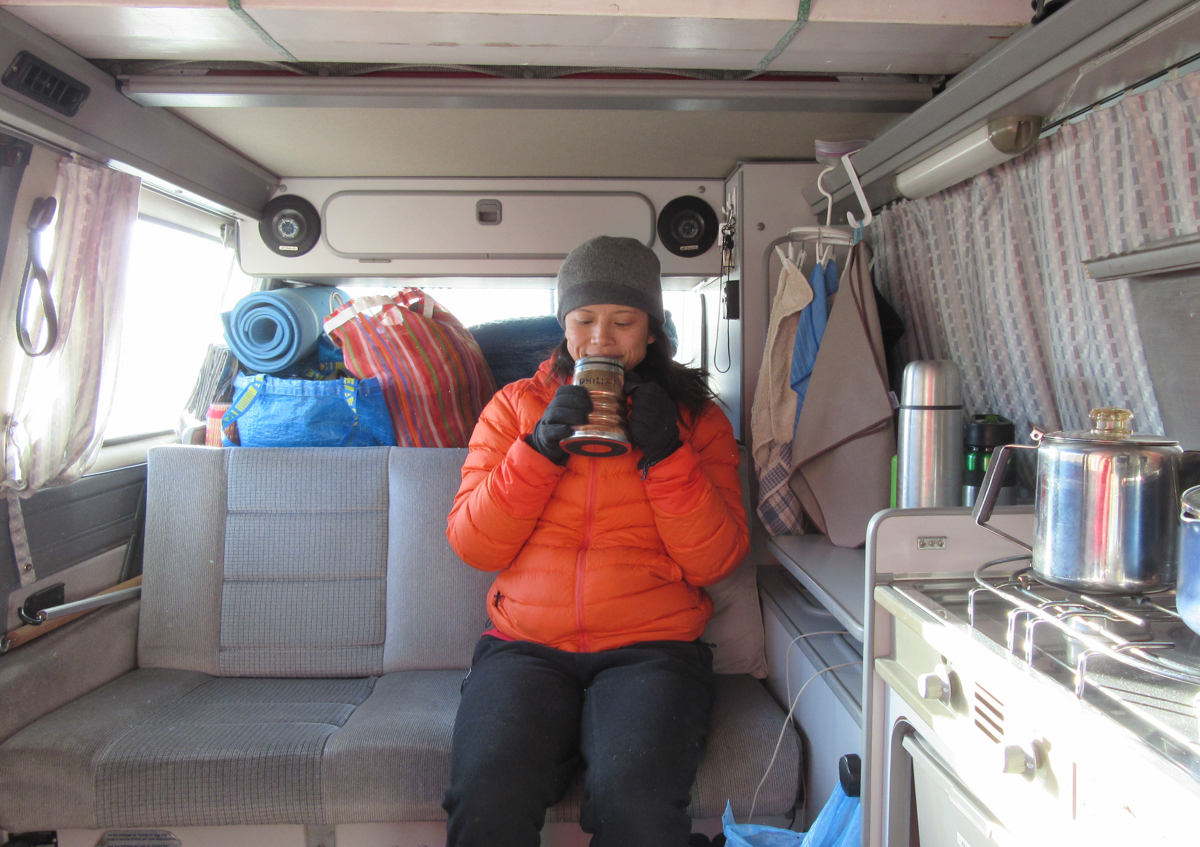
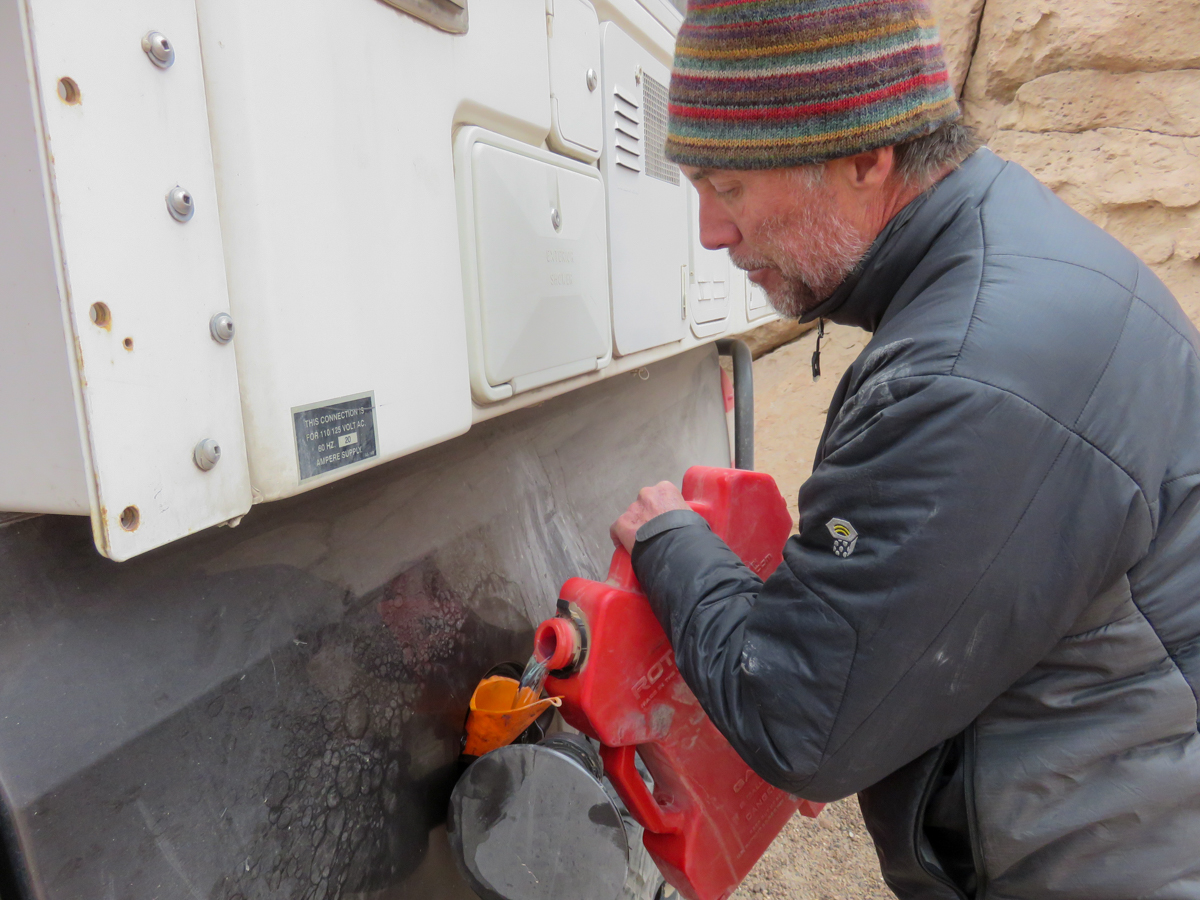
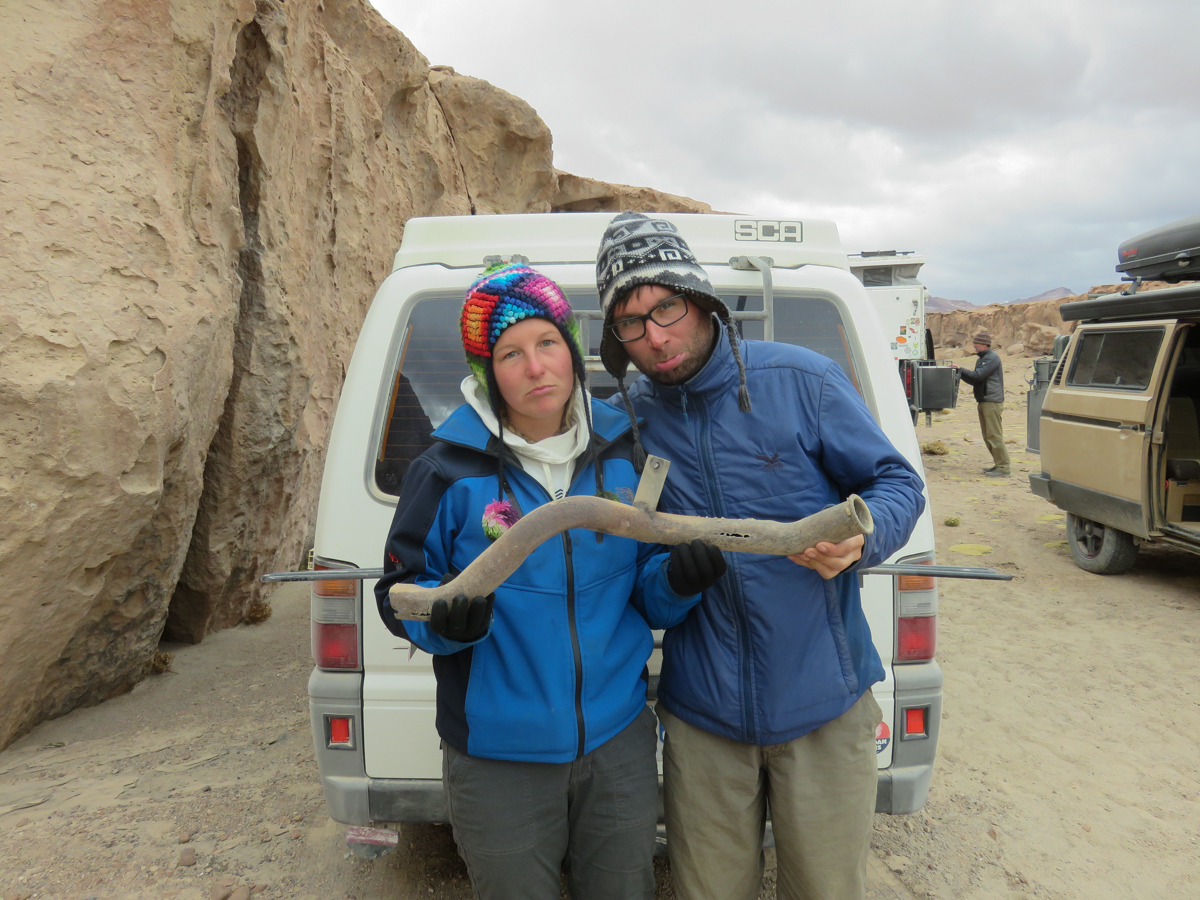

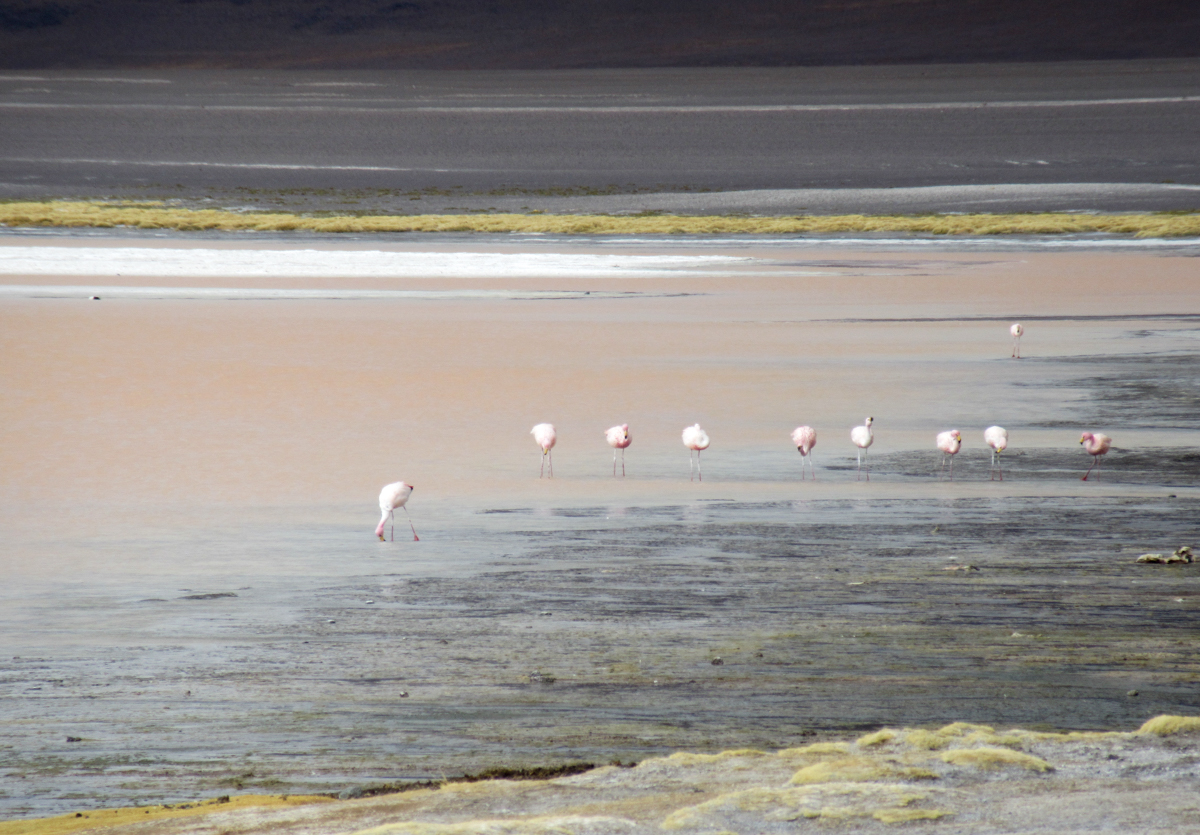
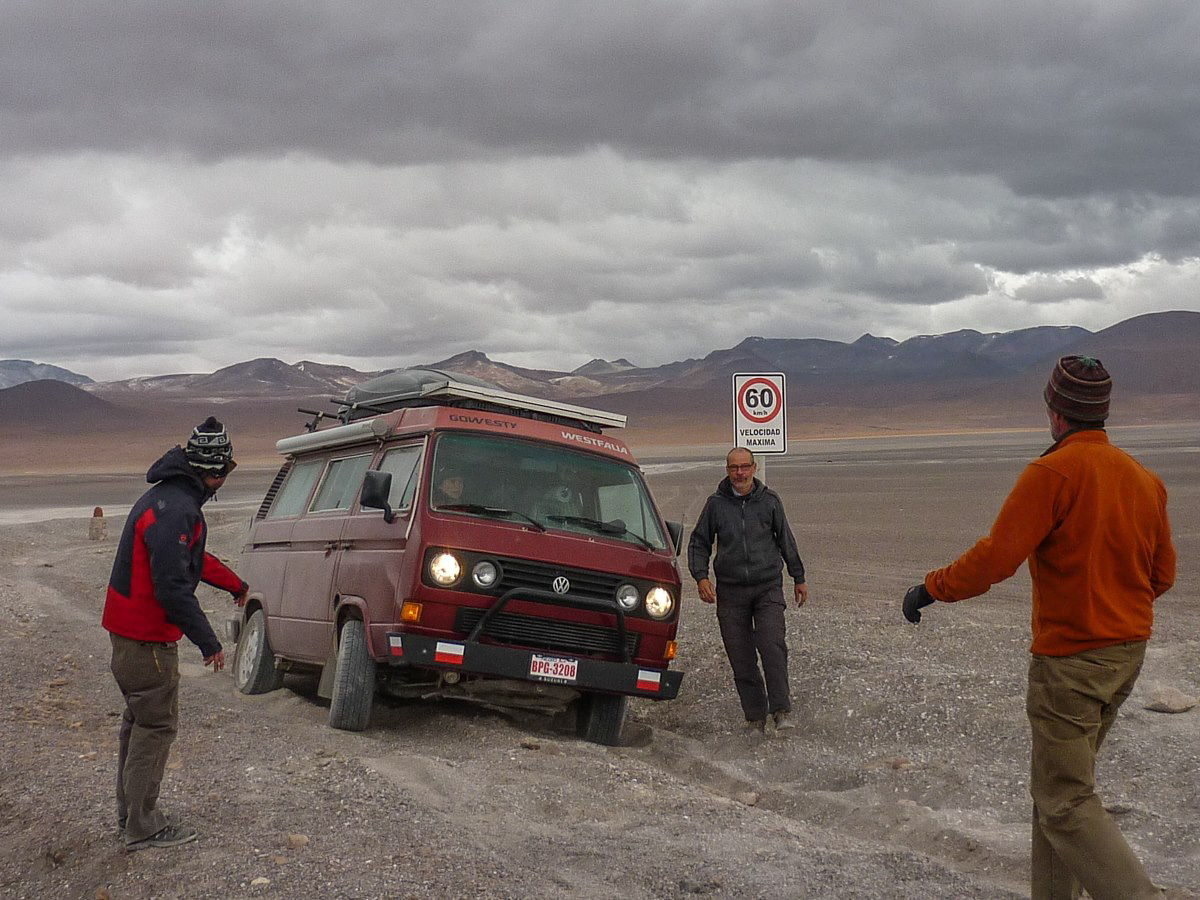
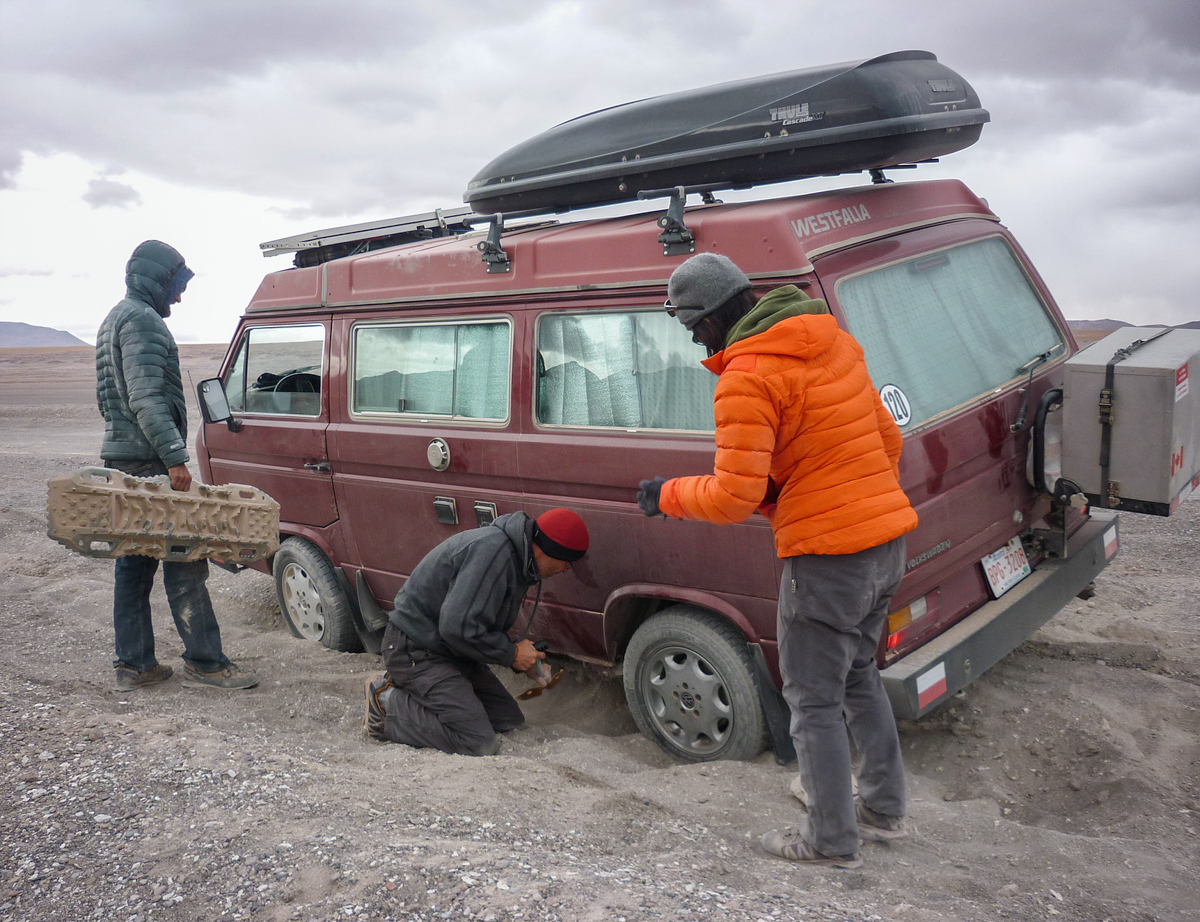
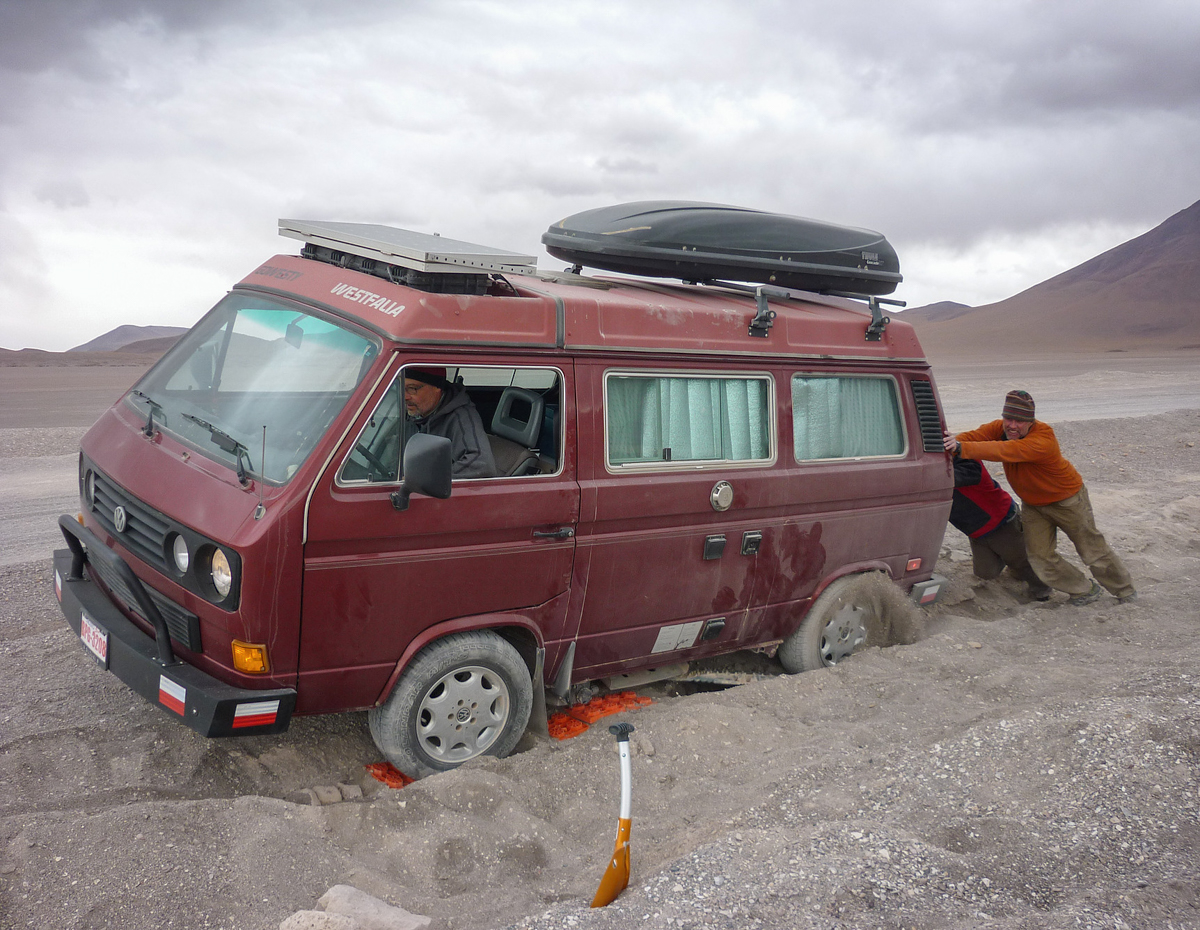
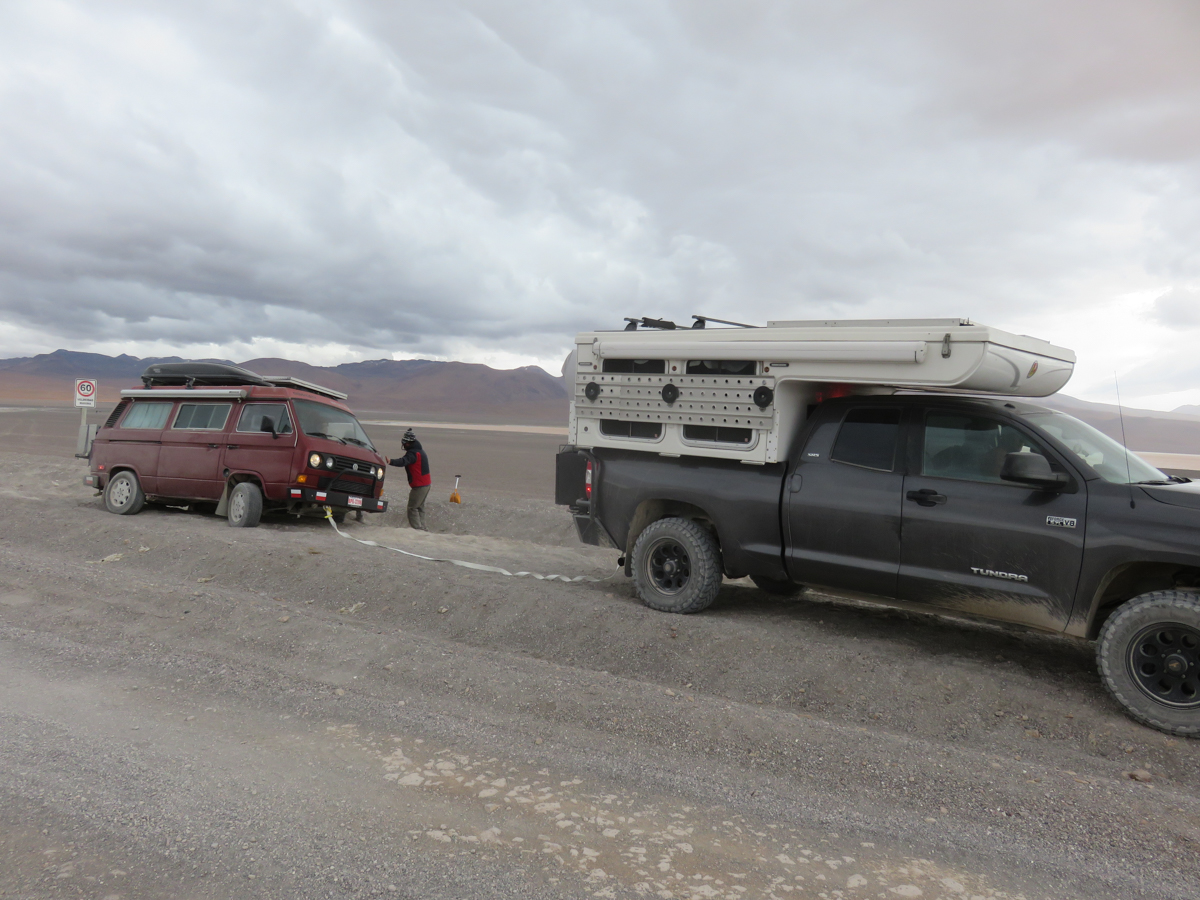
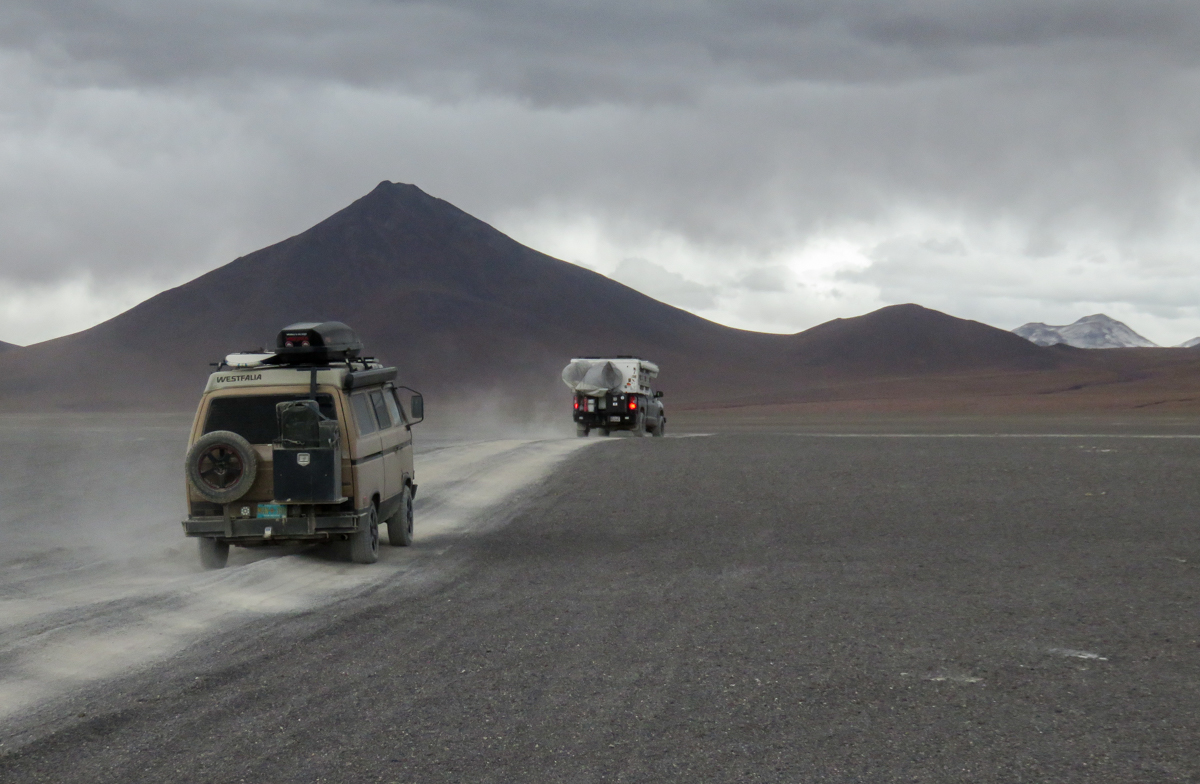
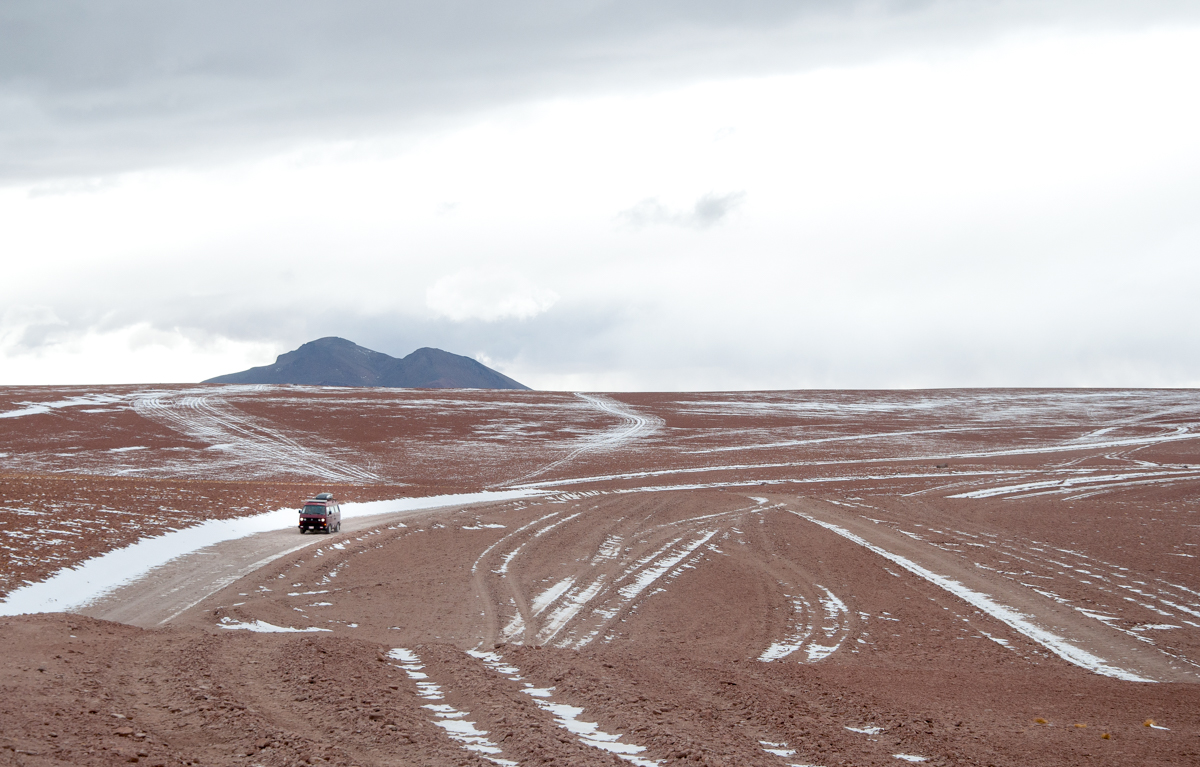
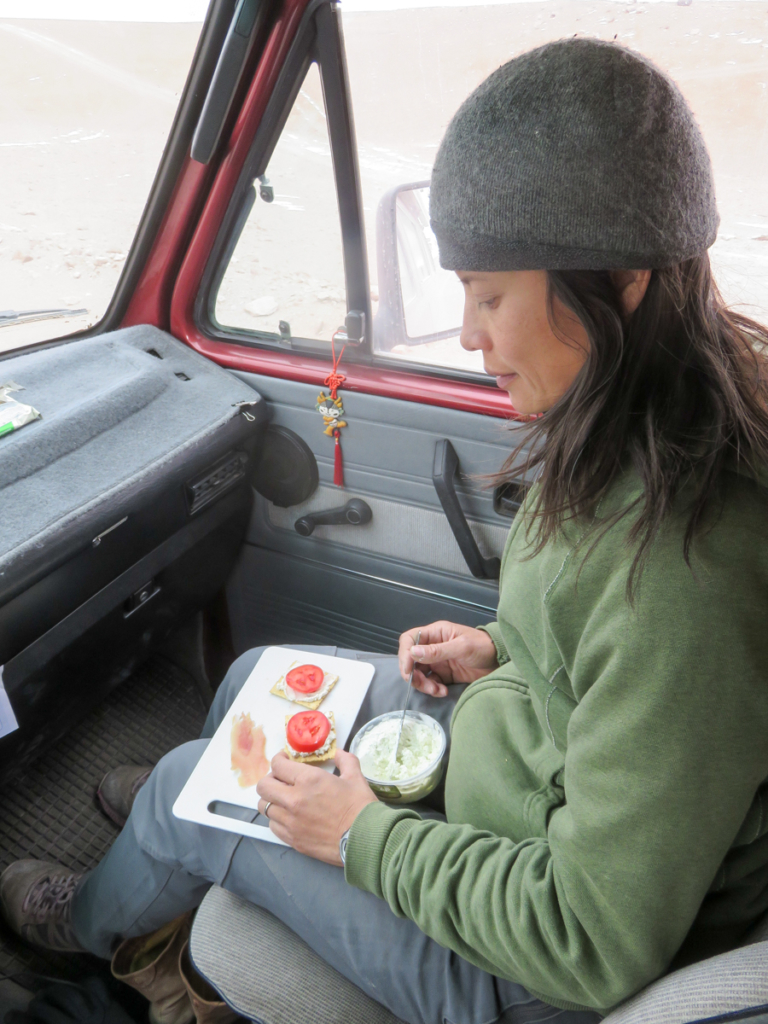
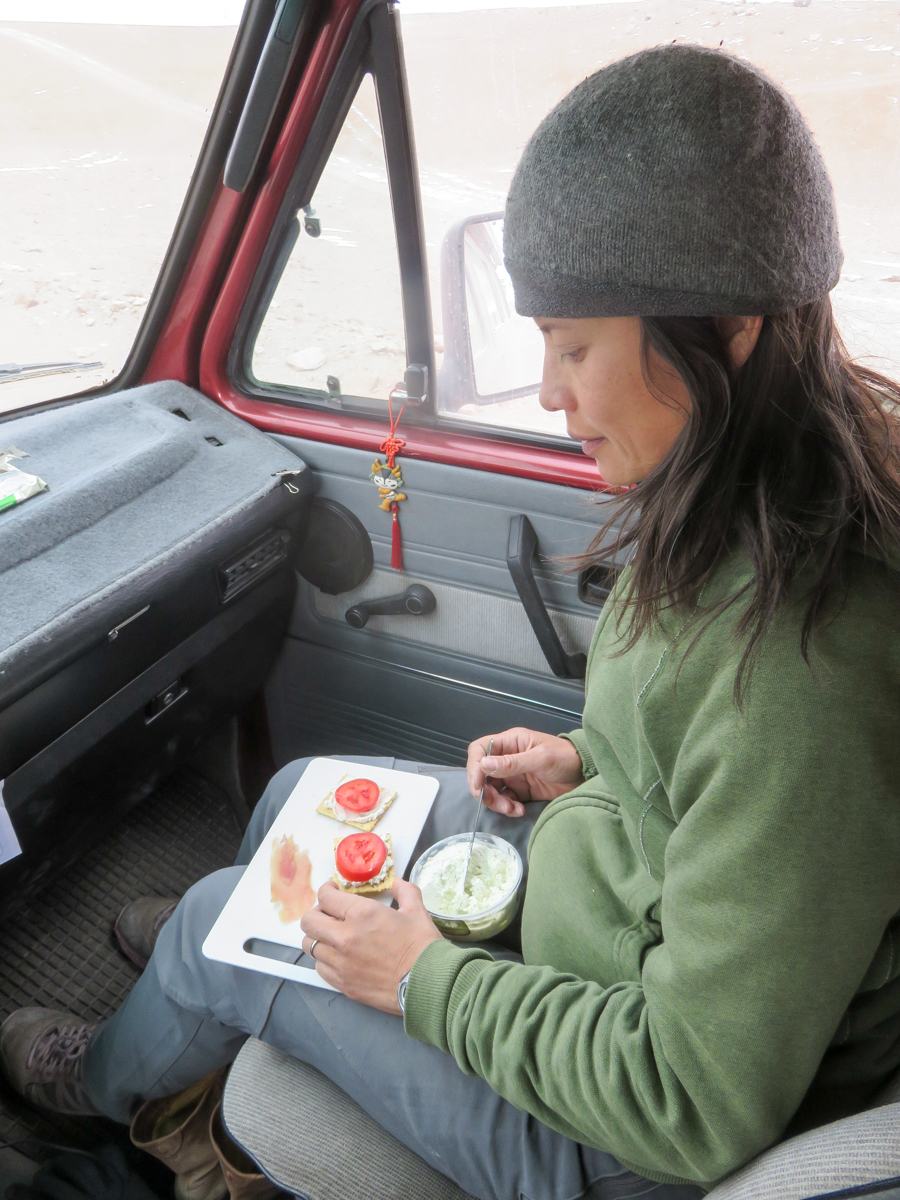
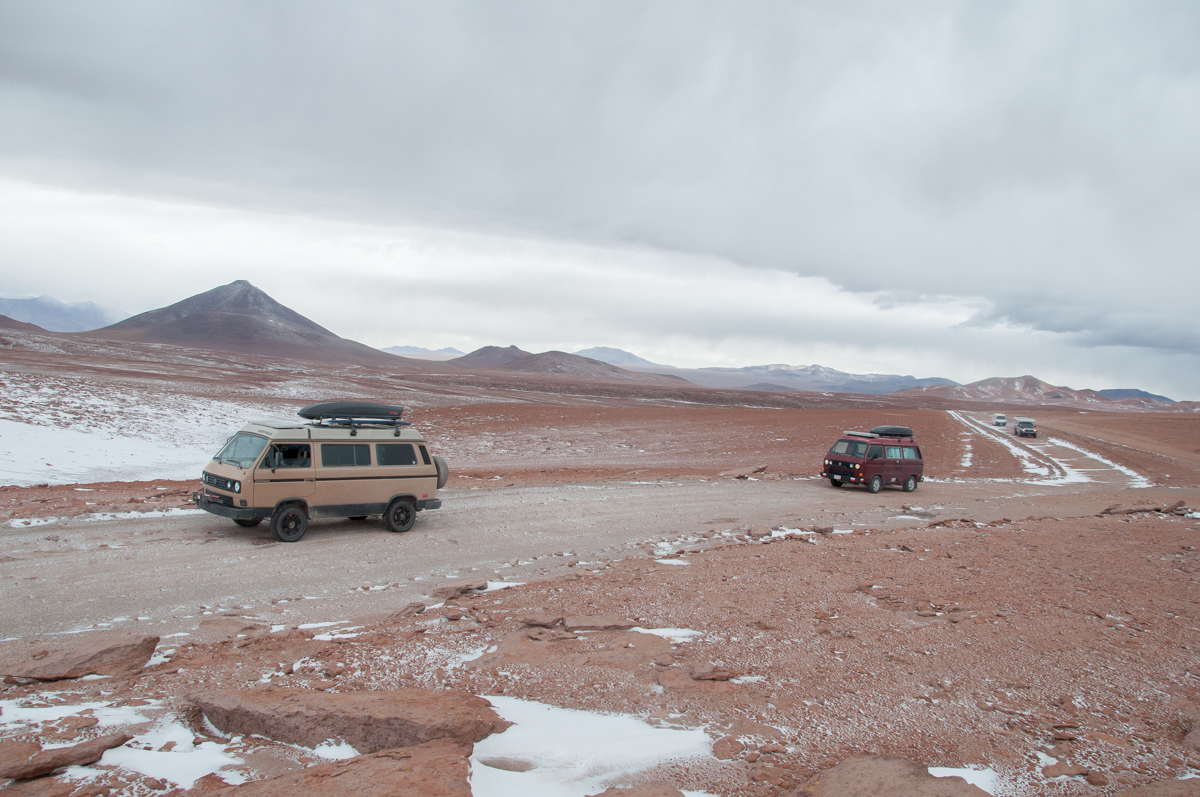
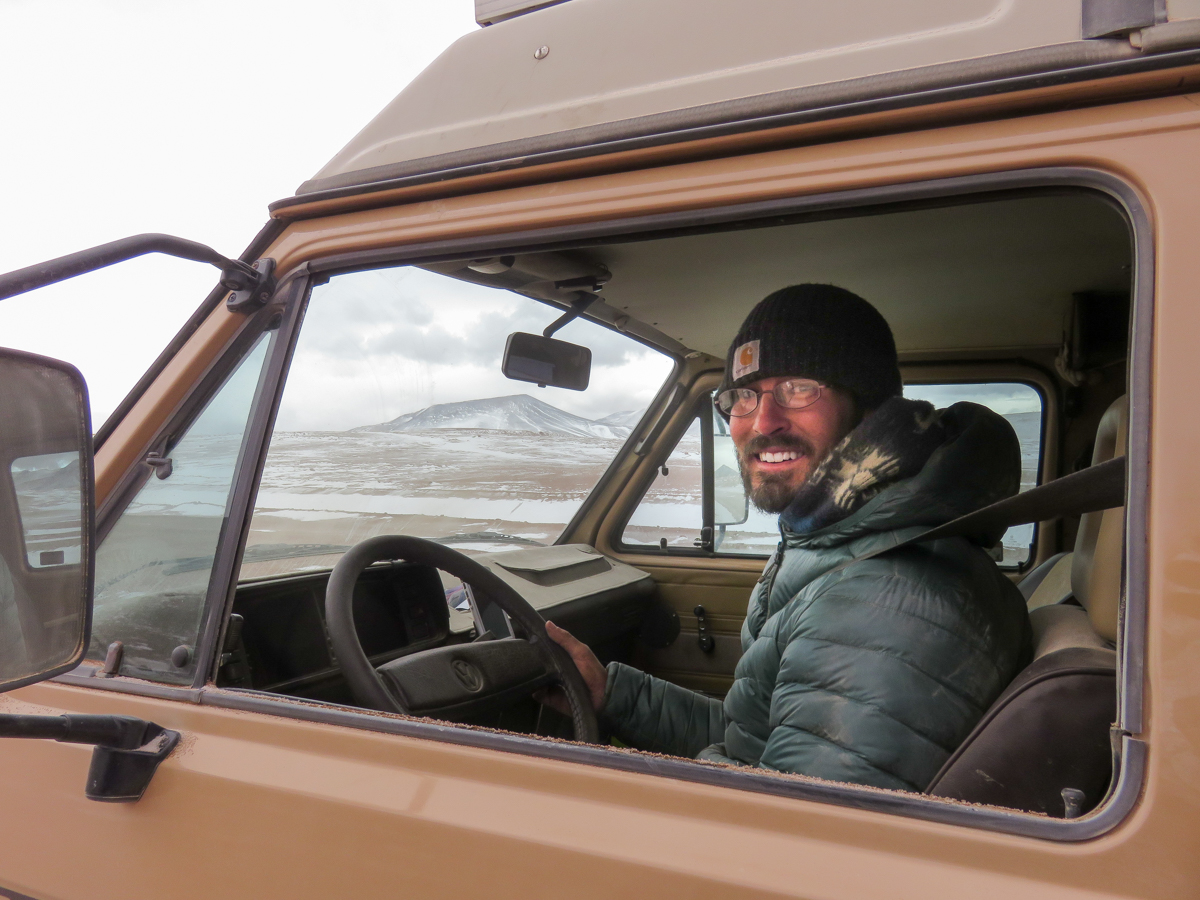
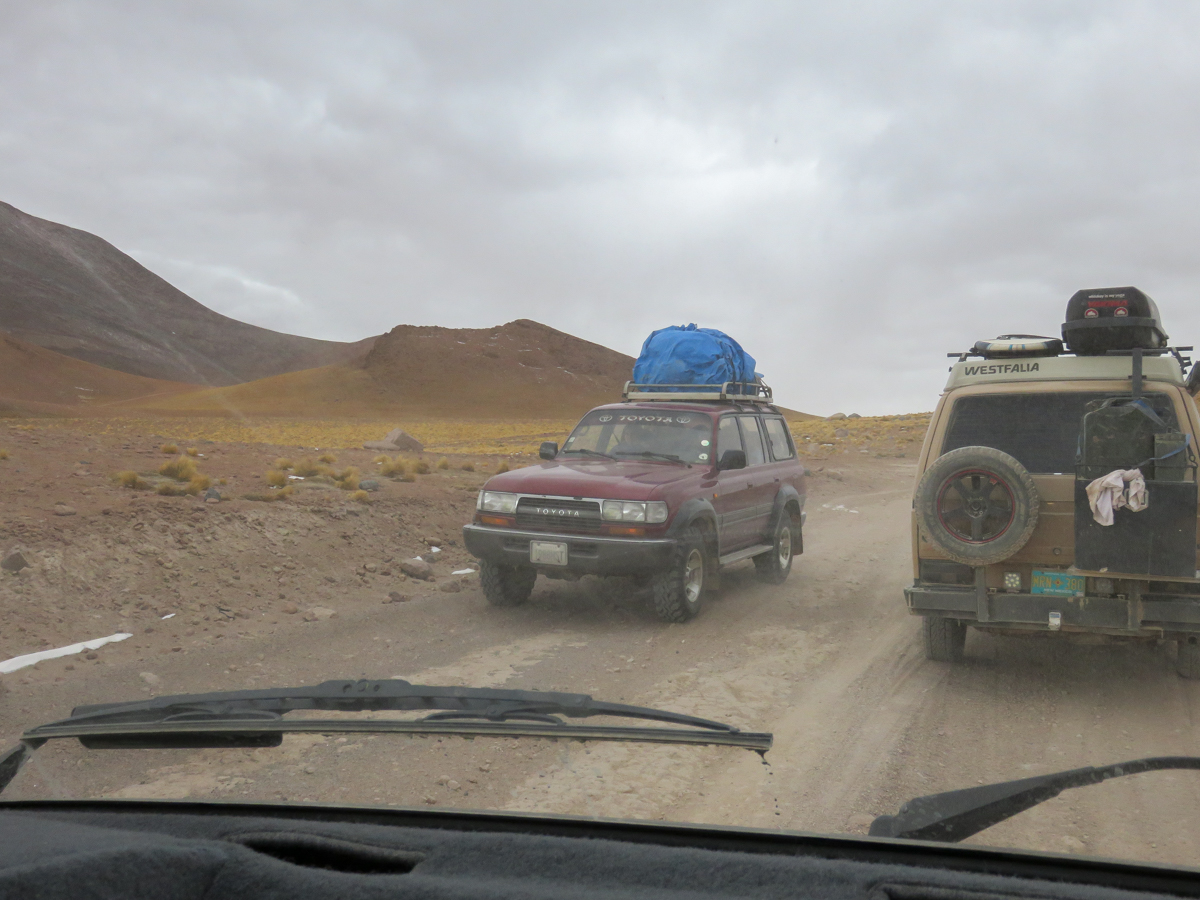
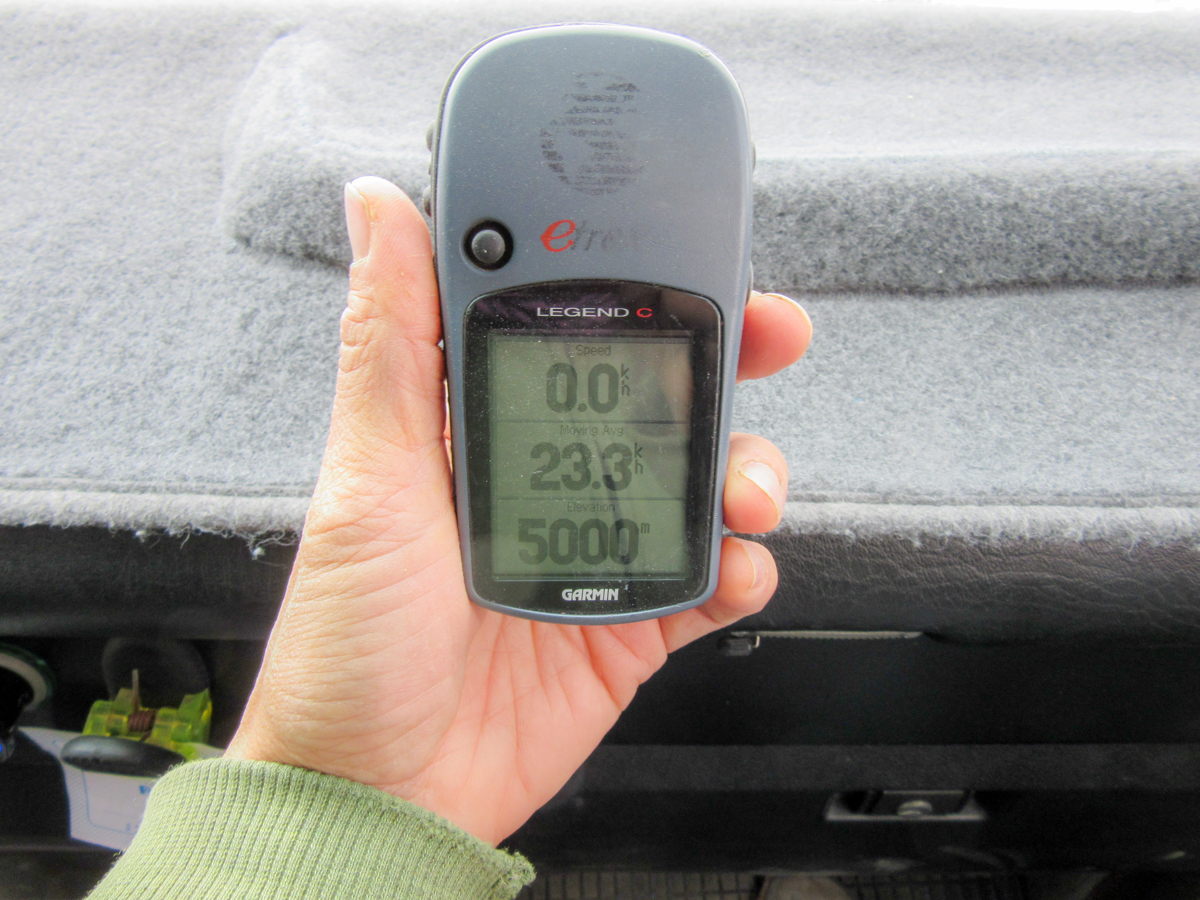
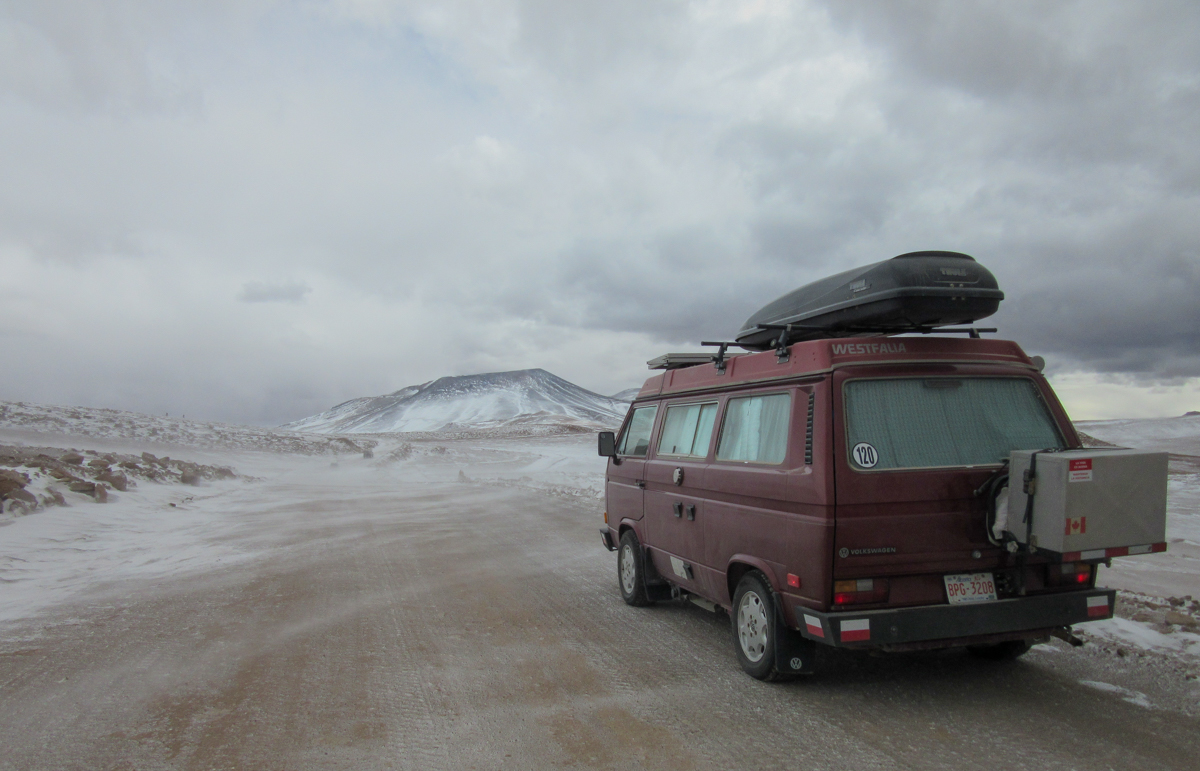
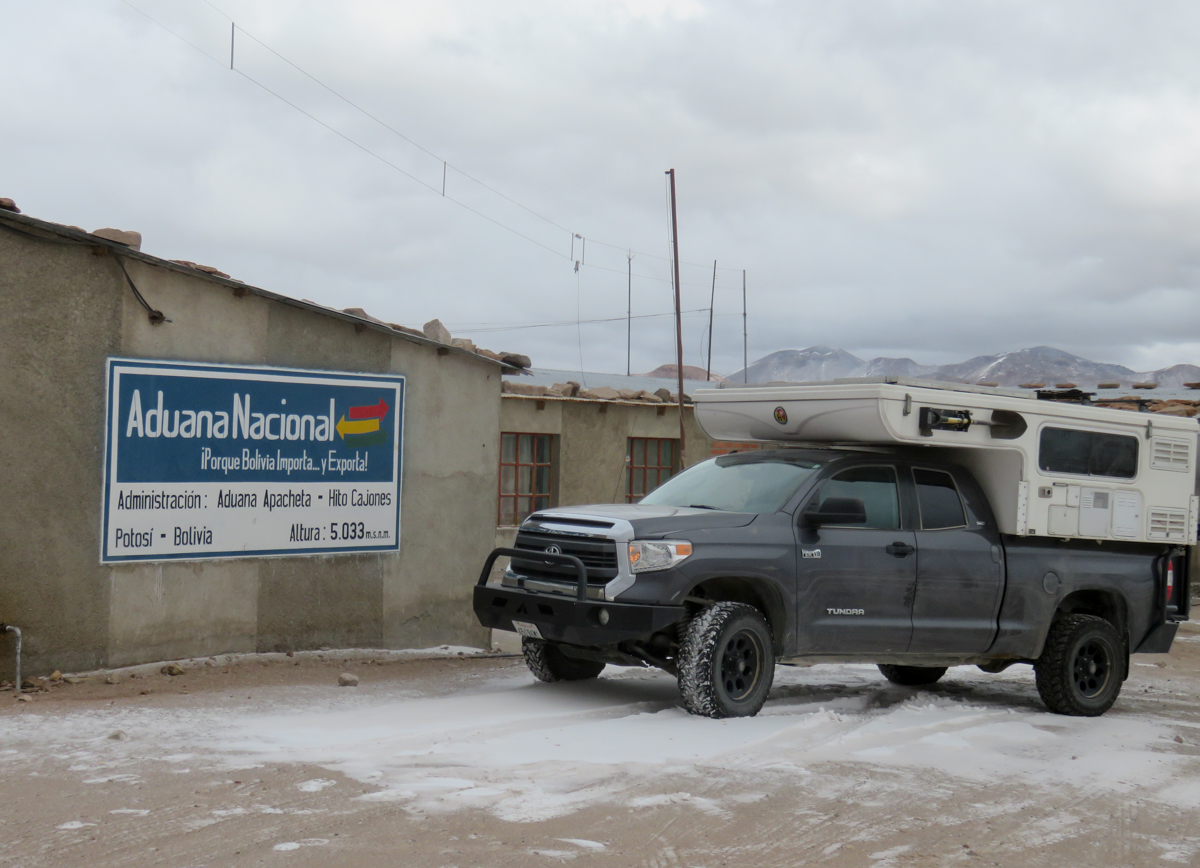
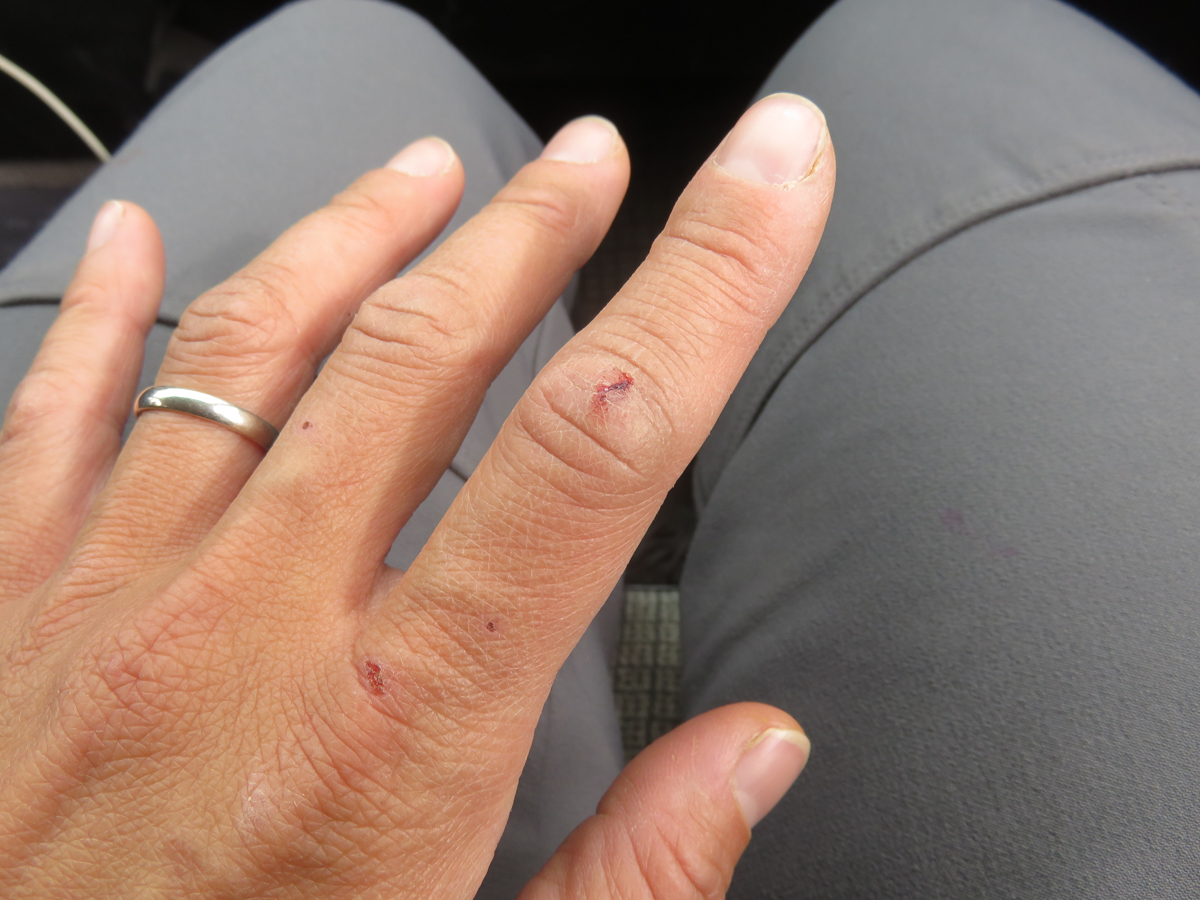
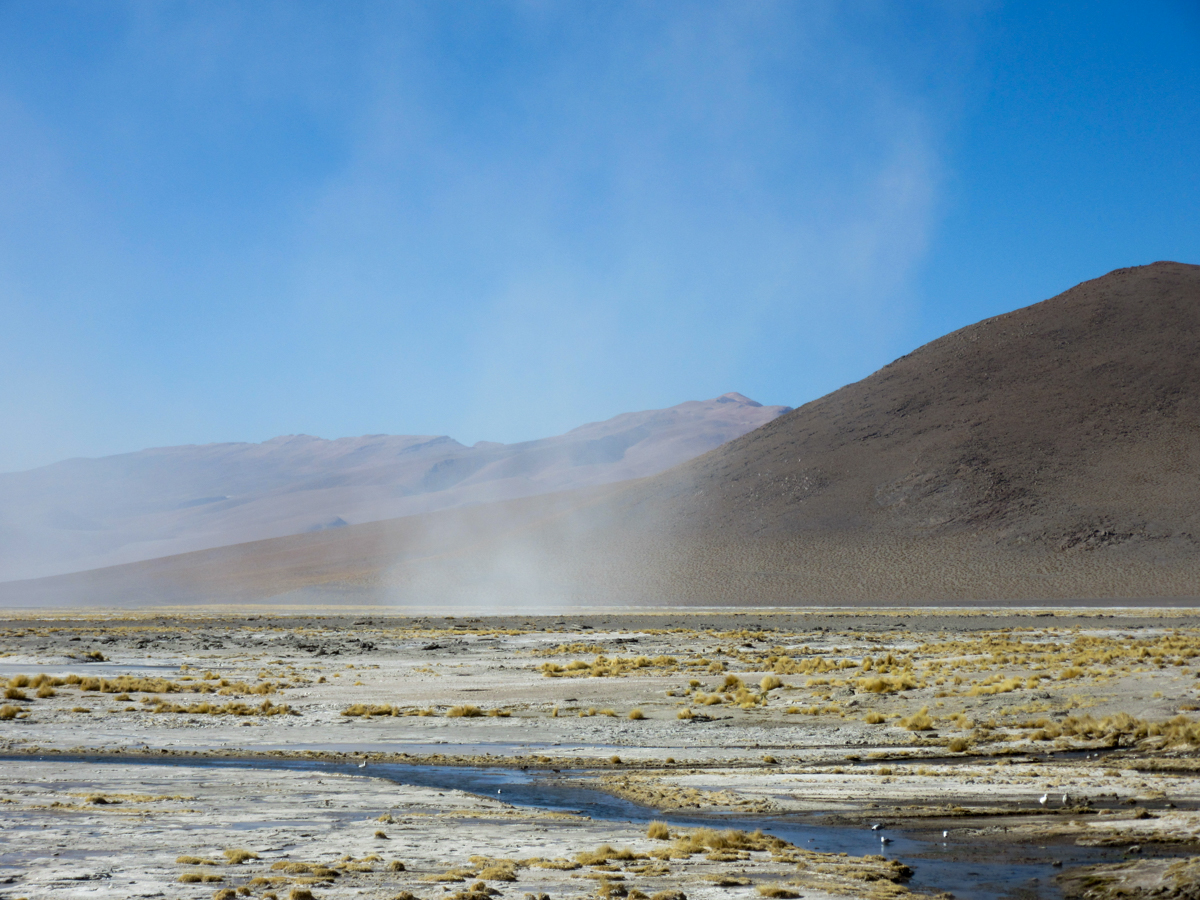
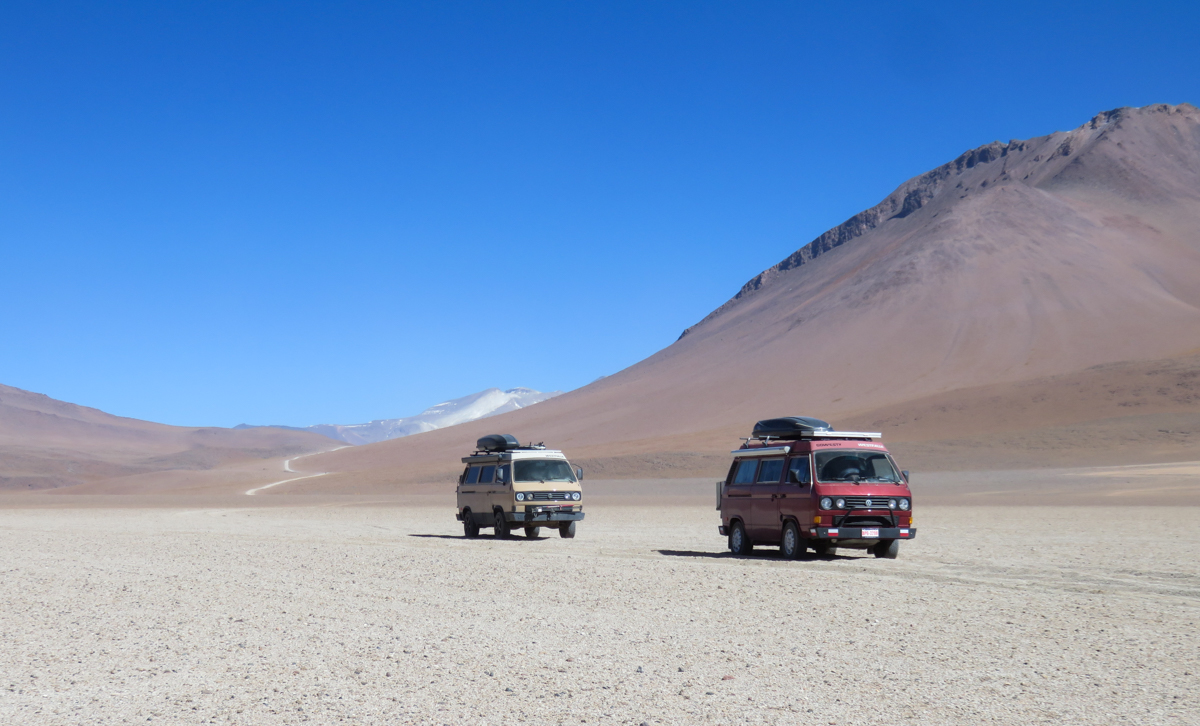
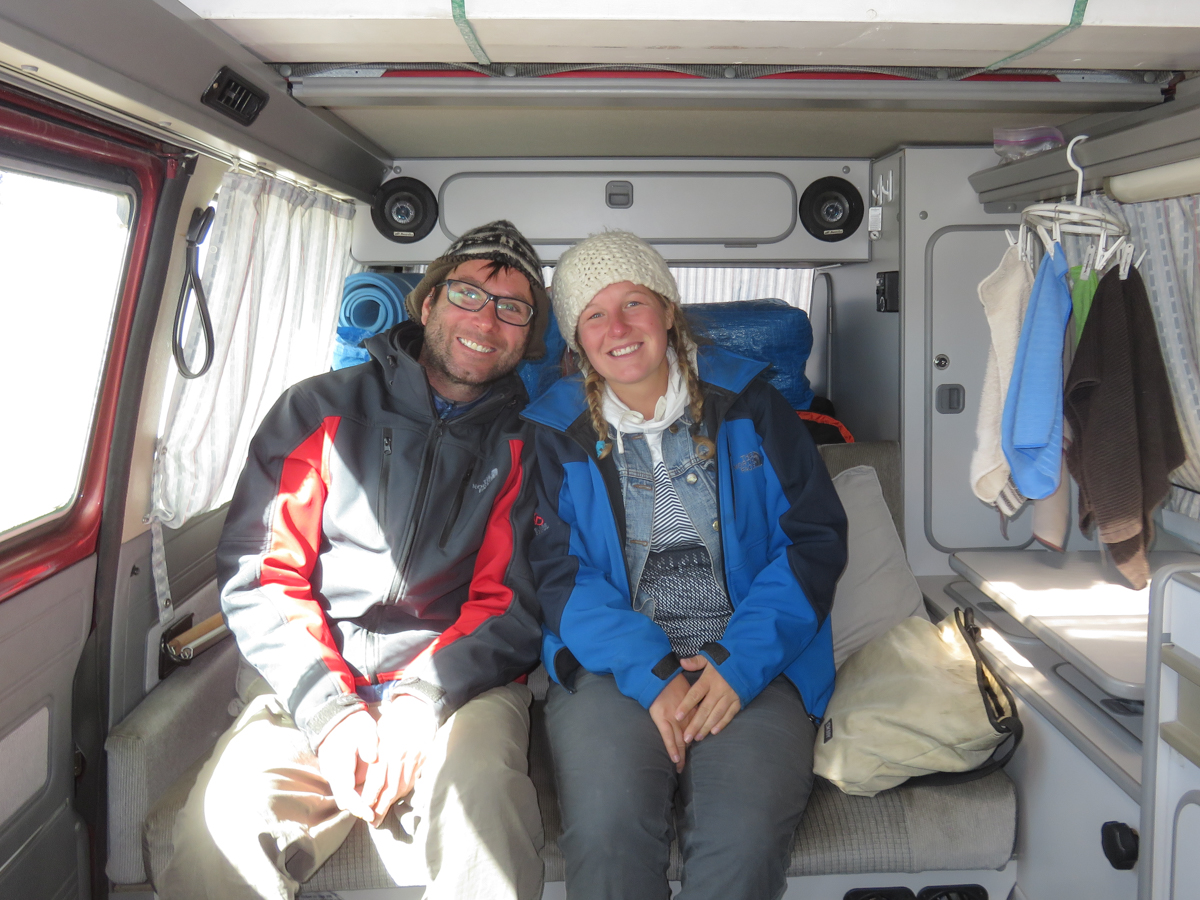
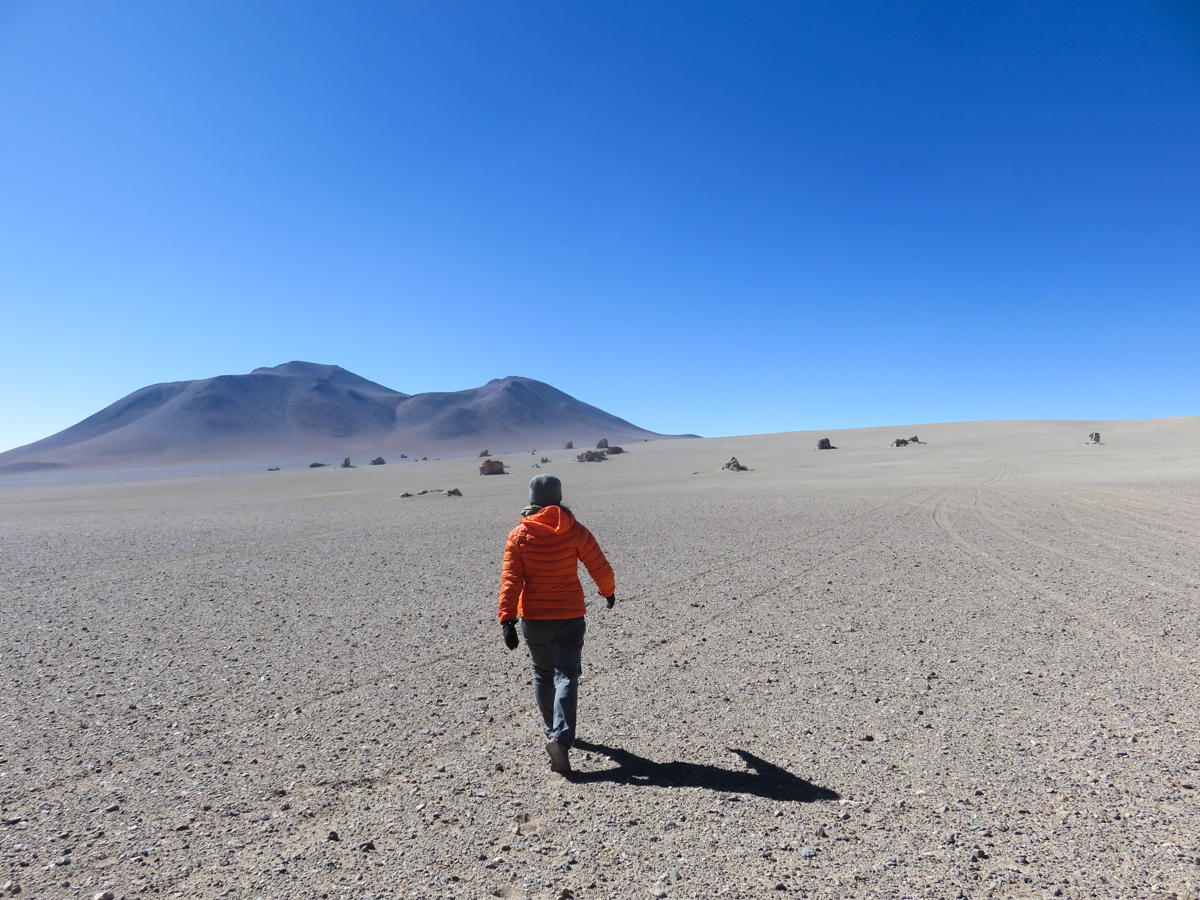
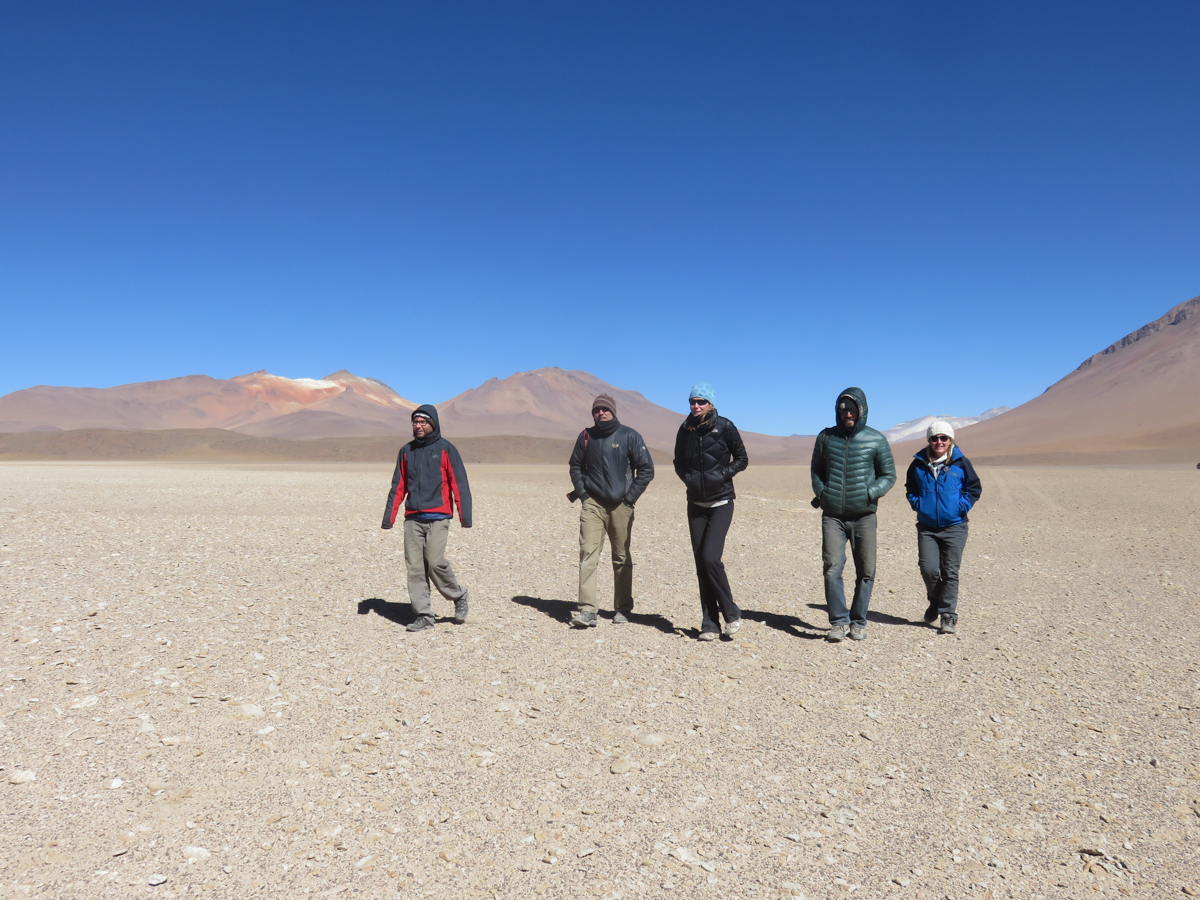
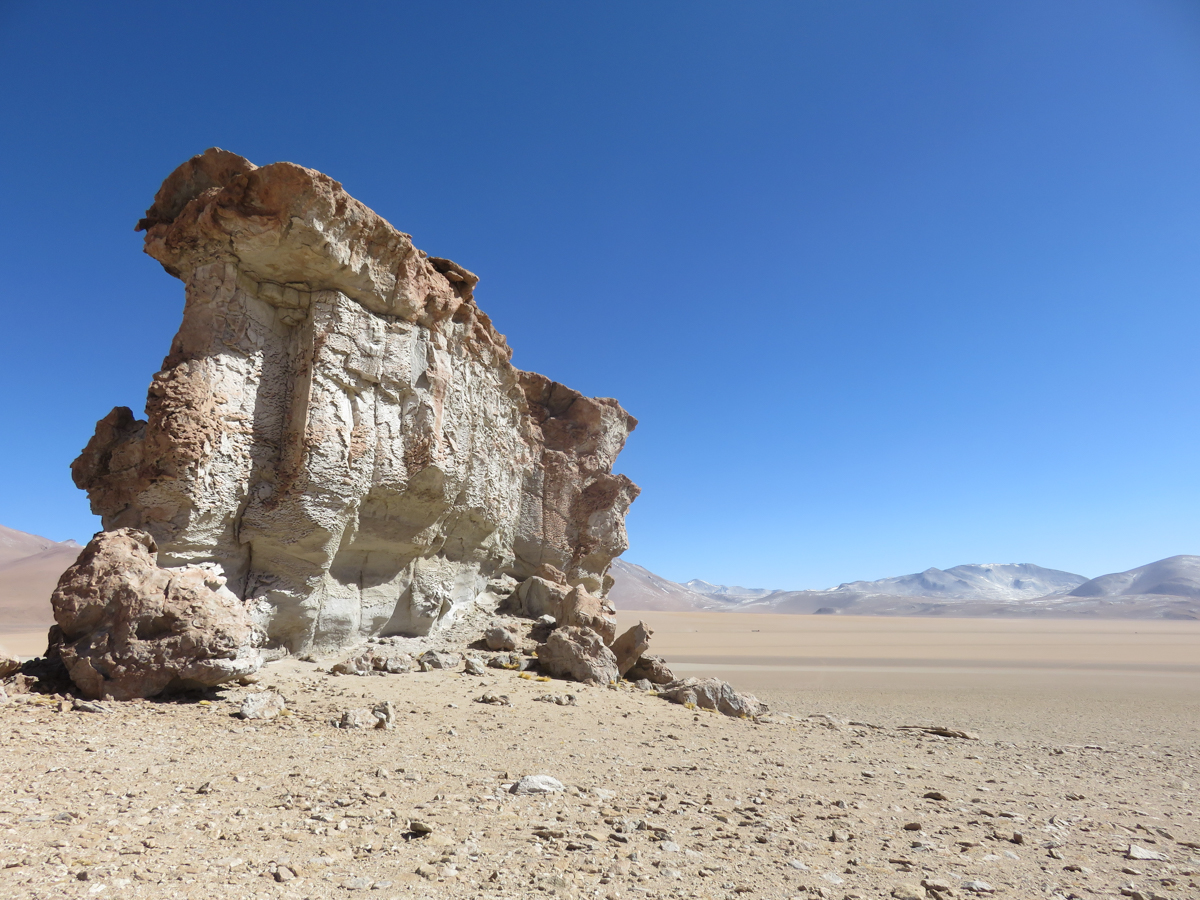
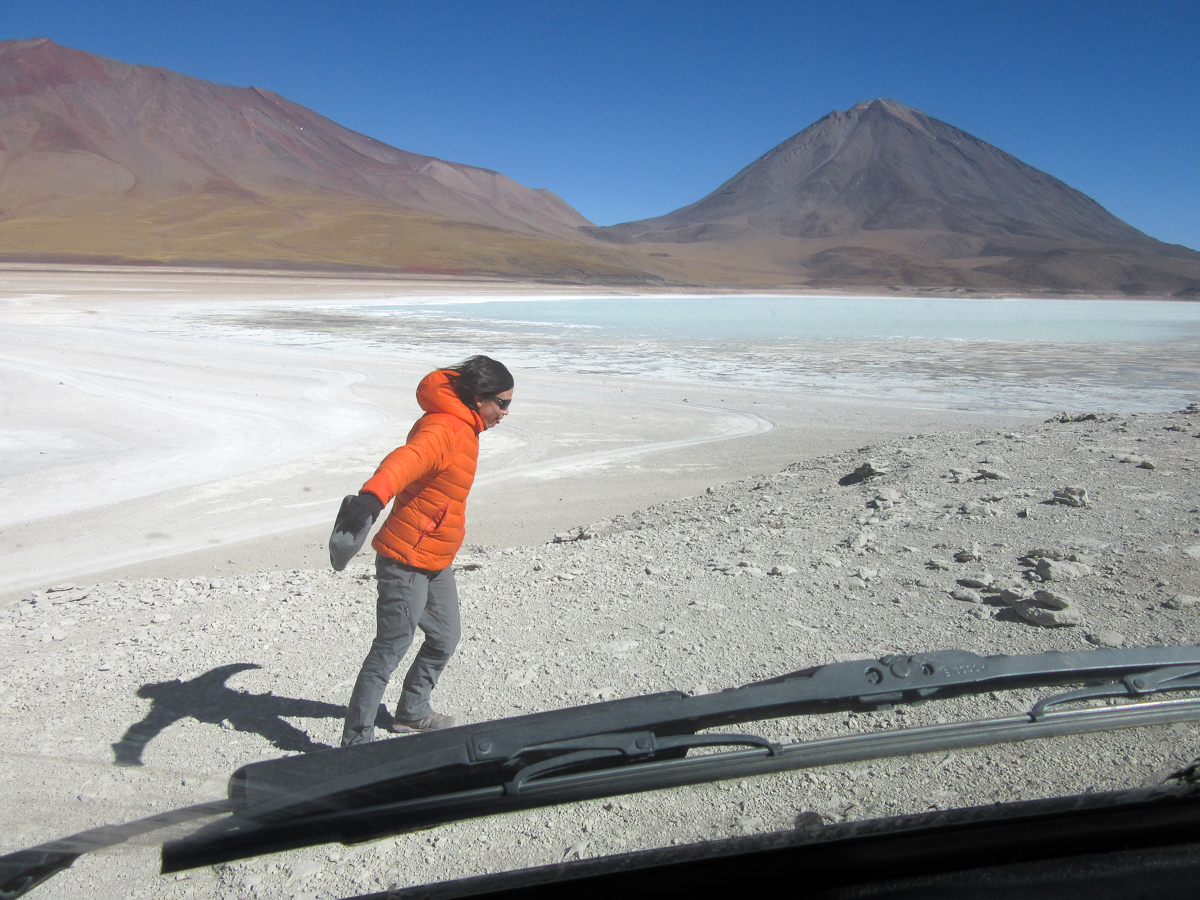
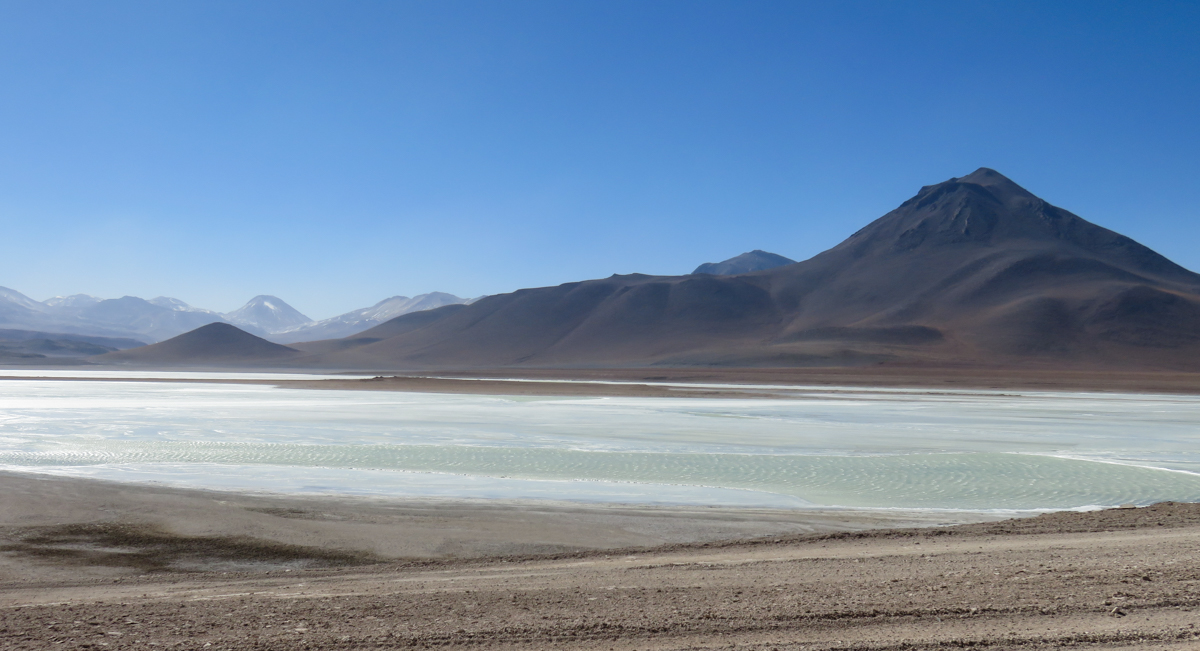
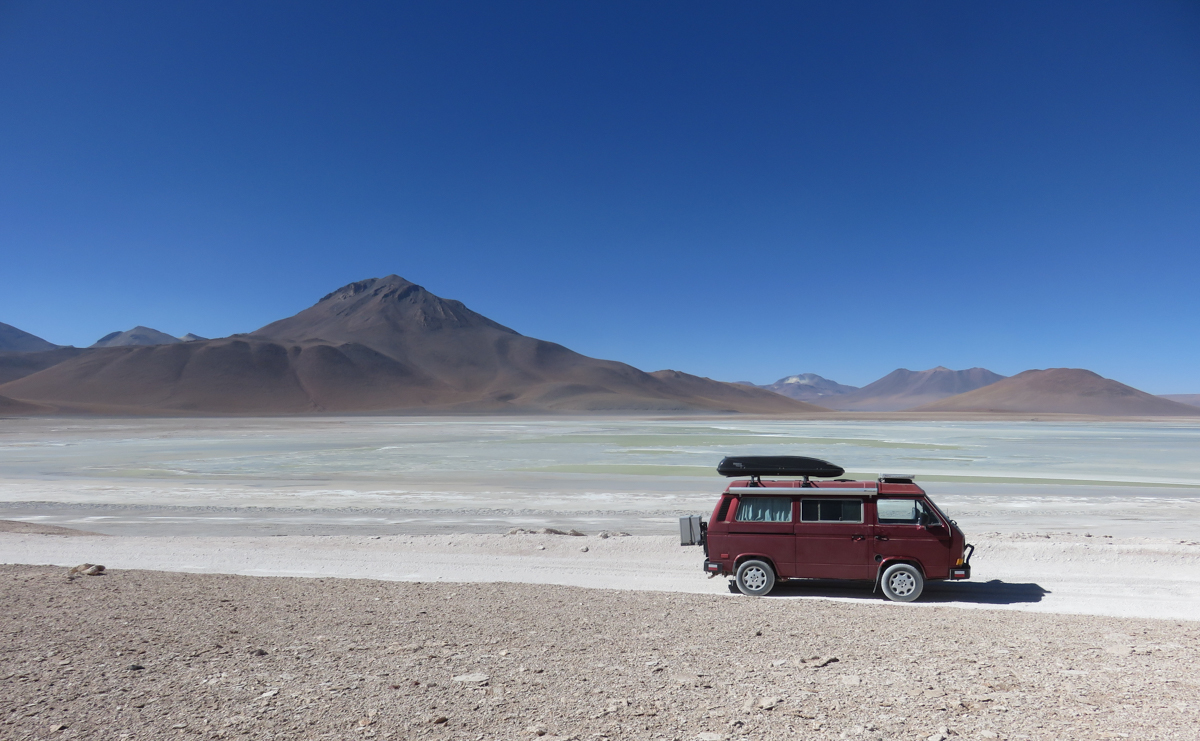
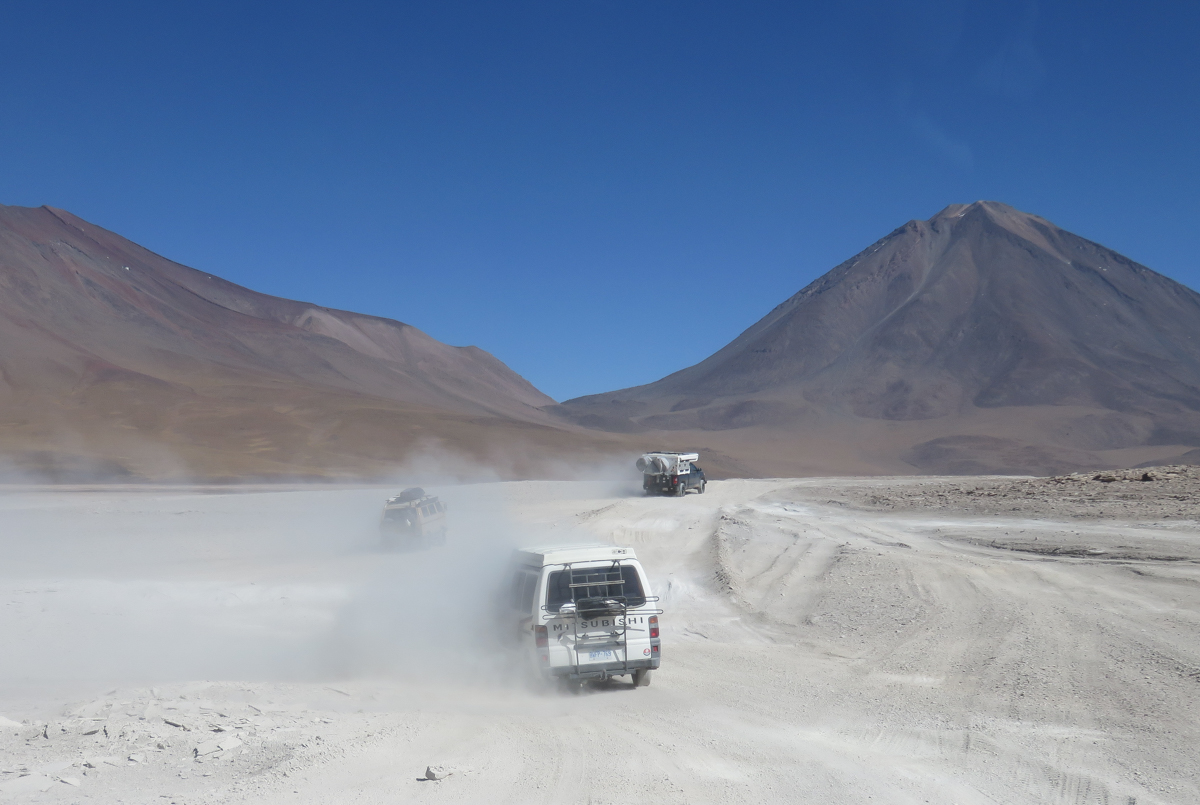
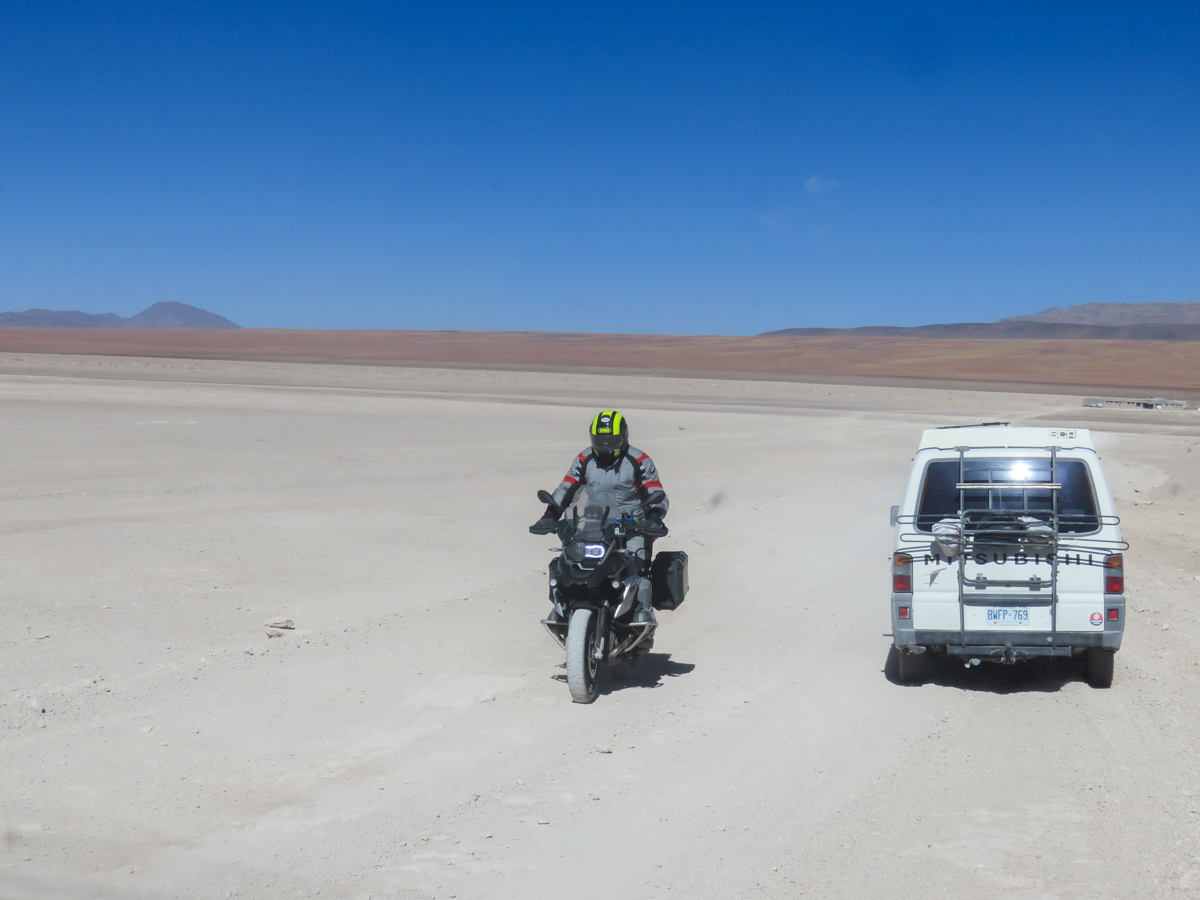
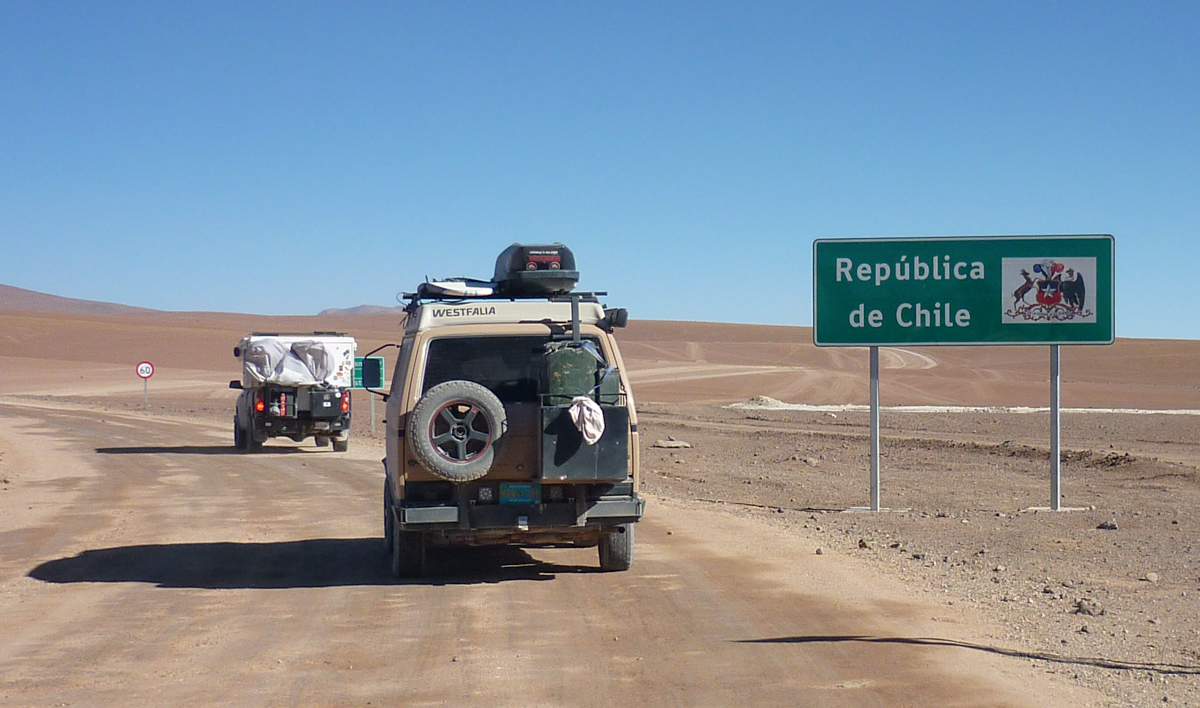
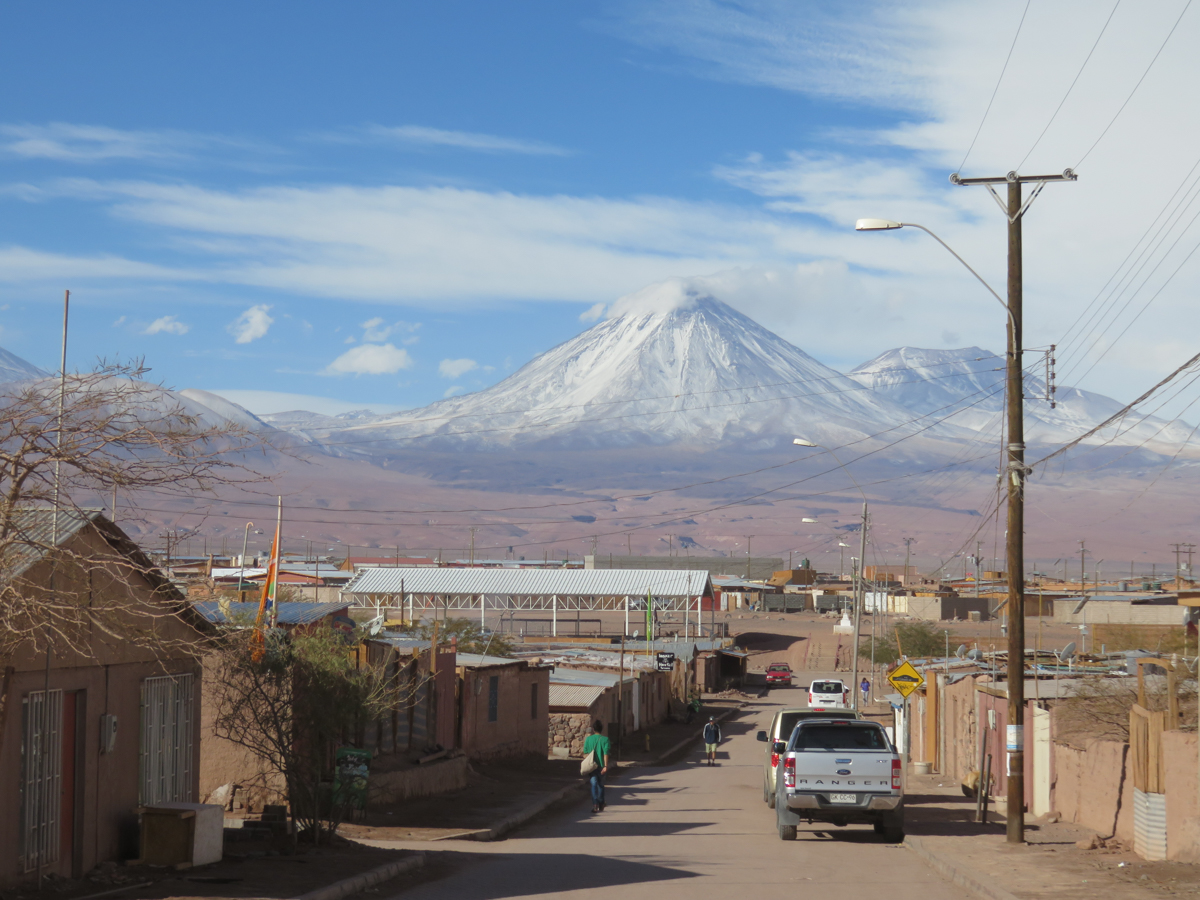
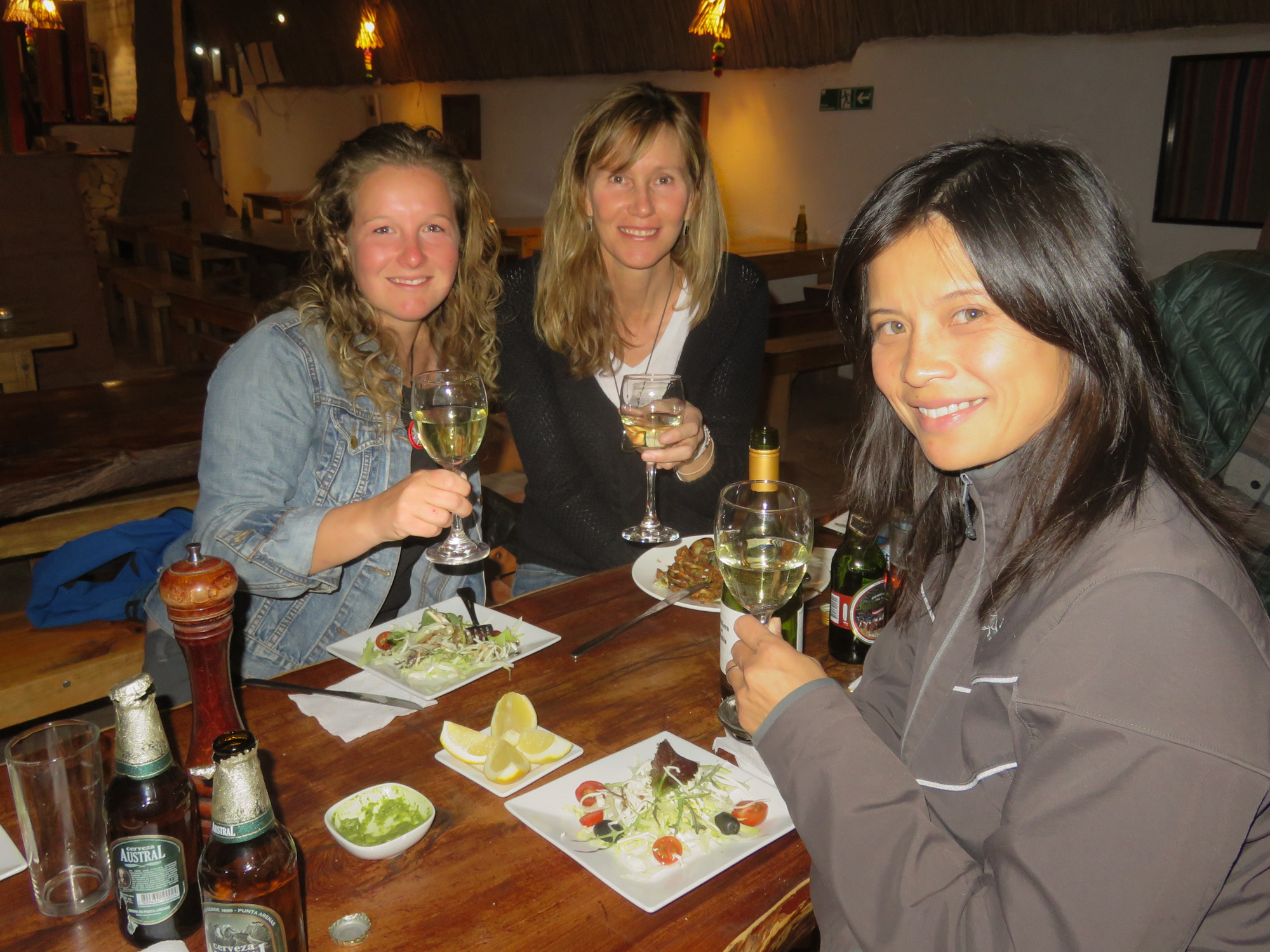

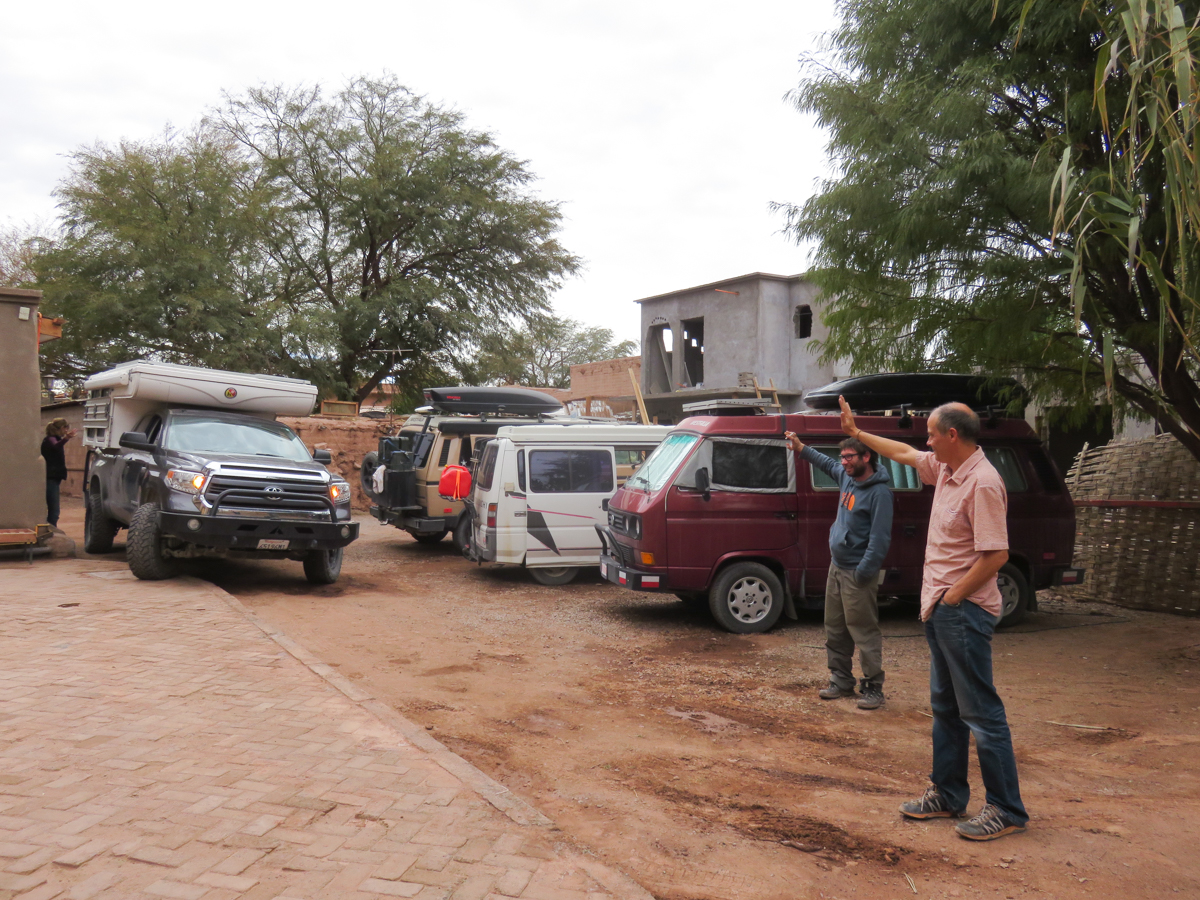
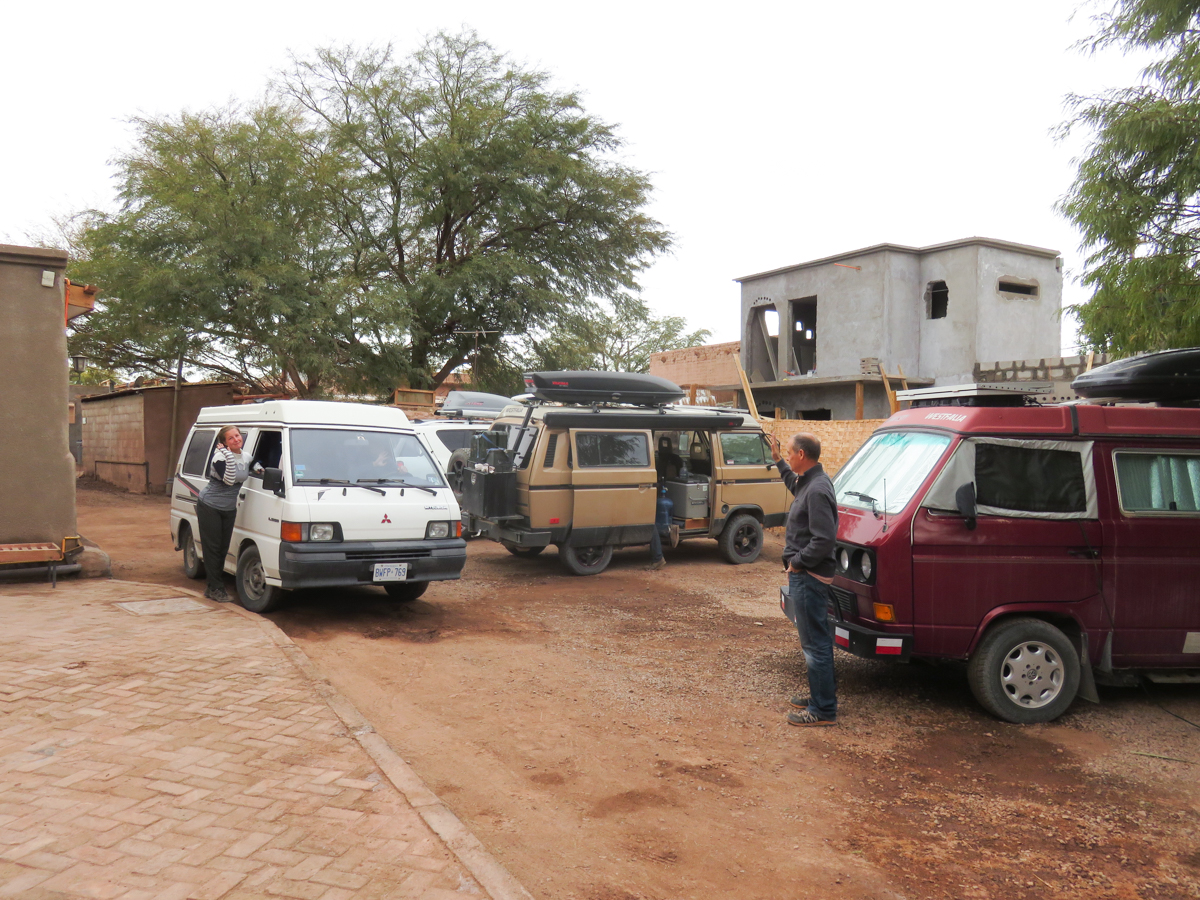

Excellent read as usual. Love the shot of you and your coffee.
Gregor makes the coffee every morning and it is always good, but it was particularly good during those cold mornings on the Lagunas Route. It’s the small things that can make your day!
Awesome! Looks amazing but so cold! How far was the longest between places to fill up on gas? Our range is about 550km but I’m sure that will decrease significantly with the altitude.
Hi Josh, sorry for the delayed reply – we’ve been offline for a few days. The longest between places to fill up on the Lagunas Route was between San Cristobal, Bolivia, and San Pedro de Atacama, Chile – our chosen route between those two towns was 381 km and we used 51 L of gas. Our mileage was 11% worse than normal due to altitude (15.2 L/100 km on Lagunas versus 13.5 L/100 km lifetime average). Hope this info helps. All the best for your journey to Argentina!
As always, I love reading about the tales of your adventures. What an experience! Love the photos of the landscape. I was pretty excited that you guys saw Andean flamingos!
I would say Bolivia had the most interesting landscapes among all the countries we’ve seen so far. So hard to believe that flamingos live in such cold weather. Thanks for reading!